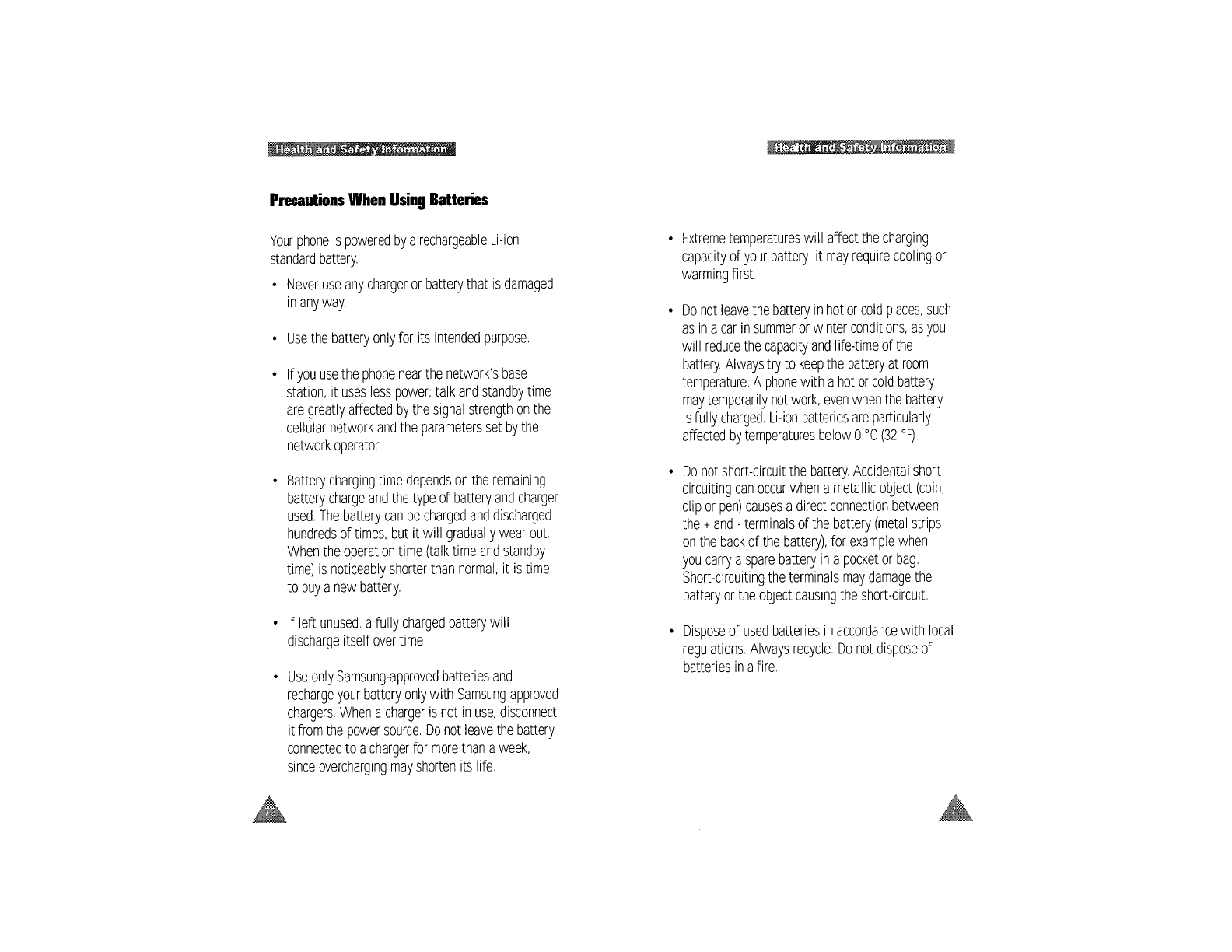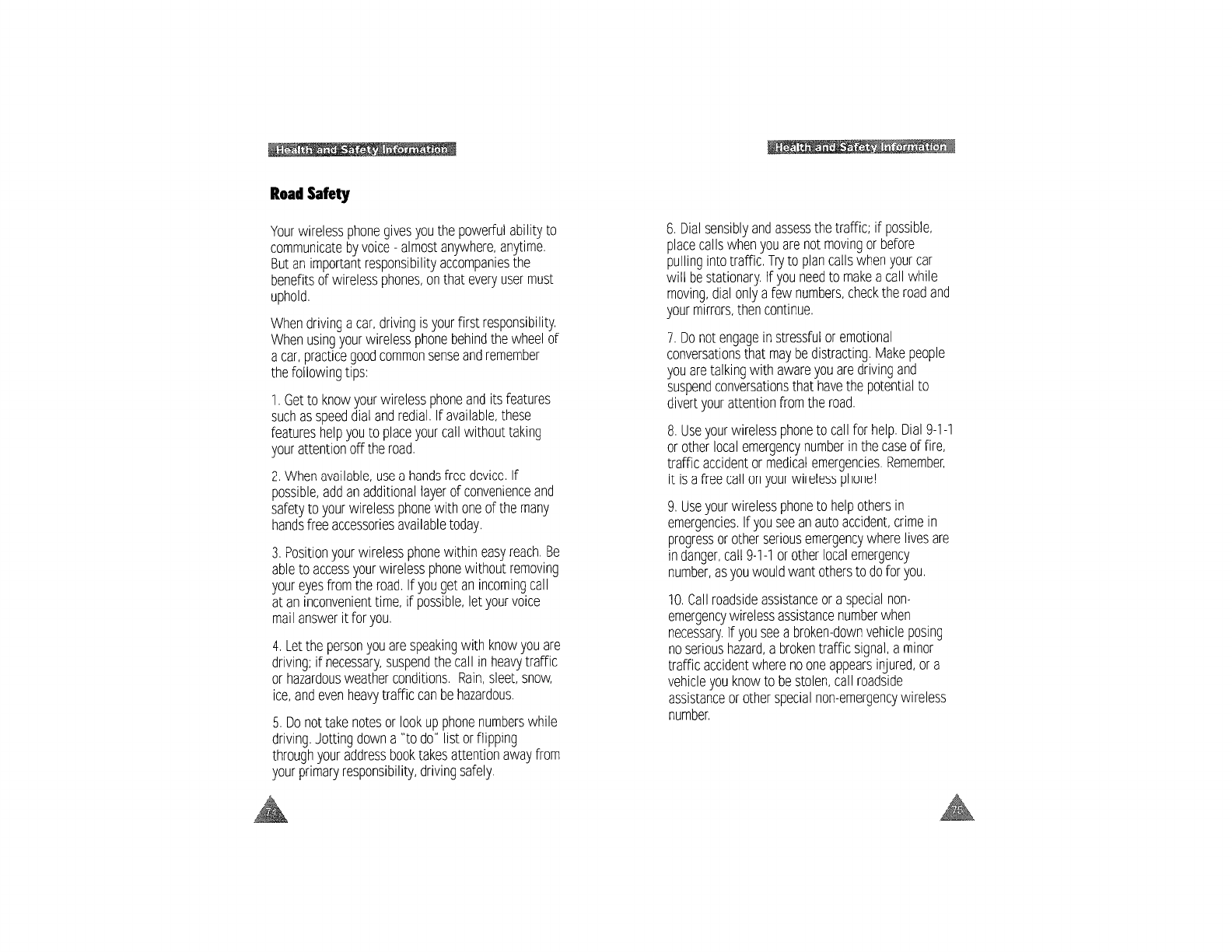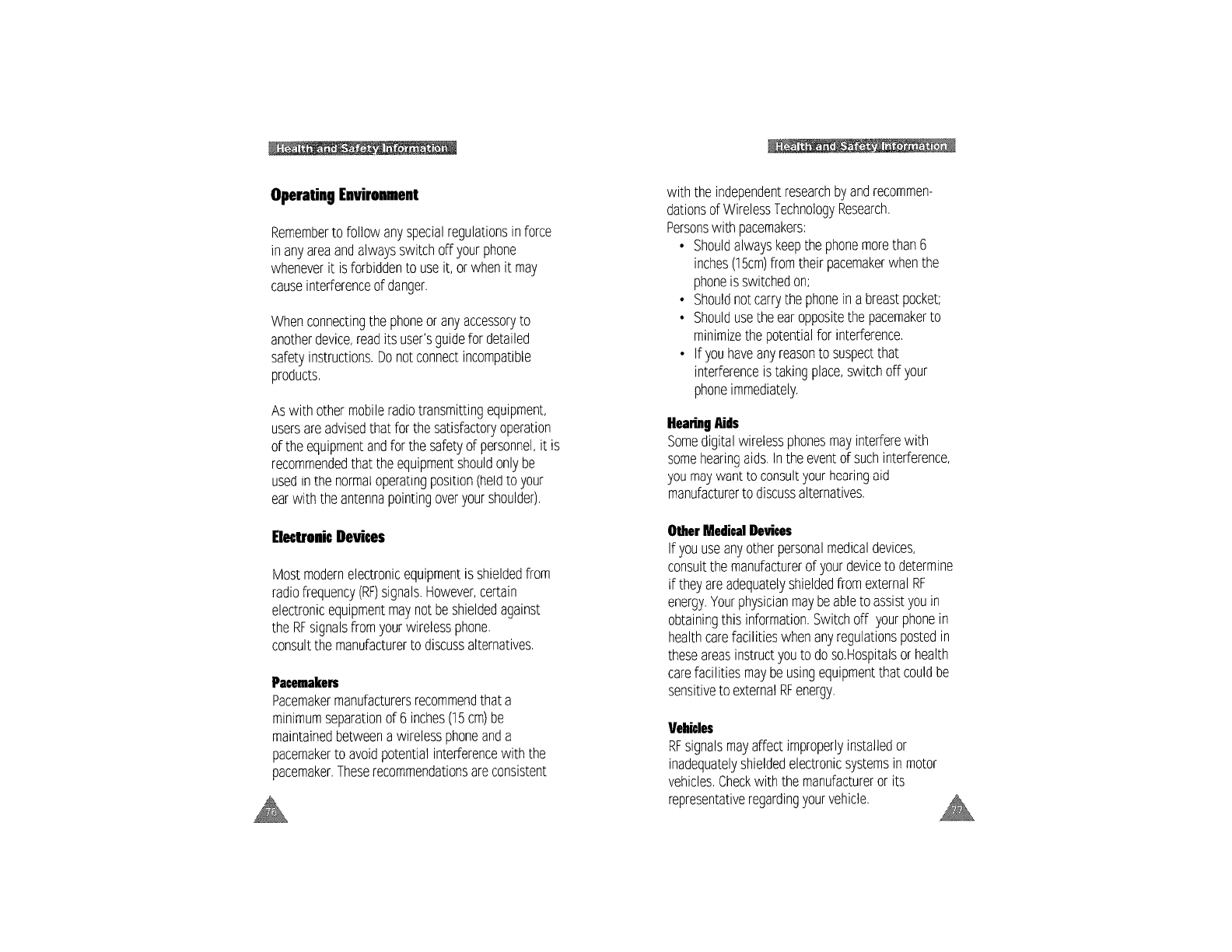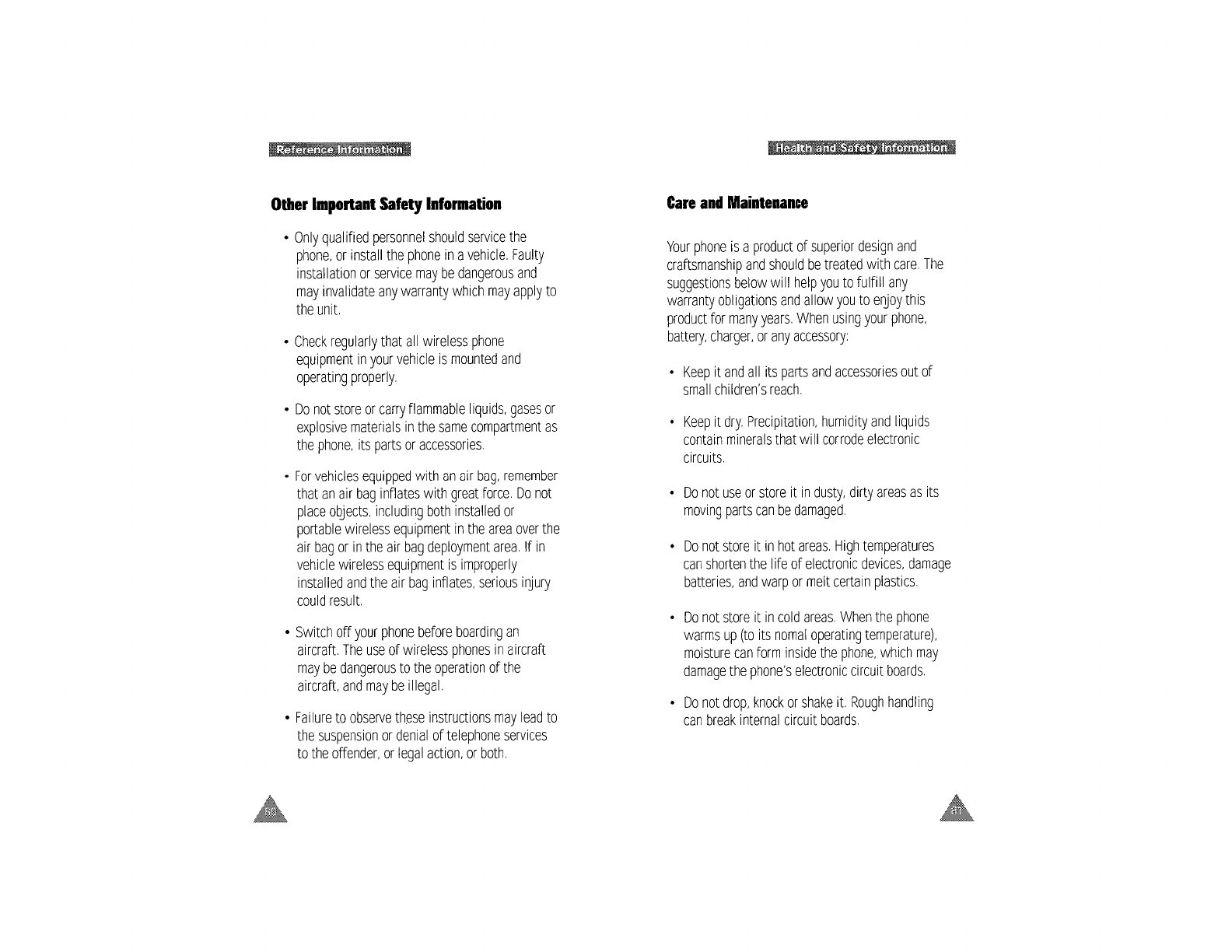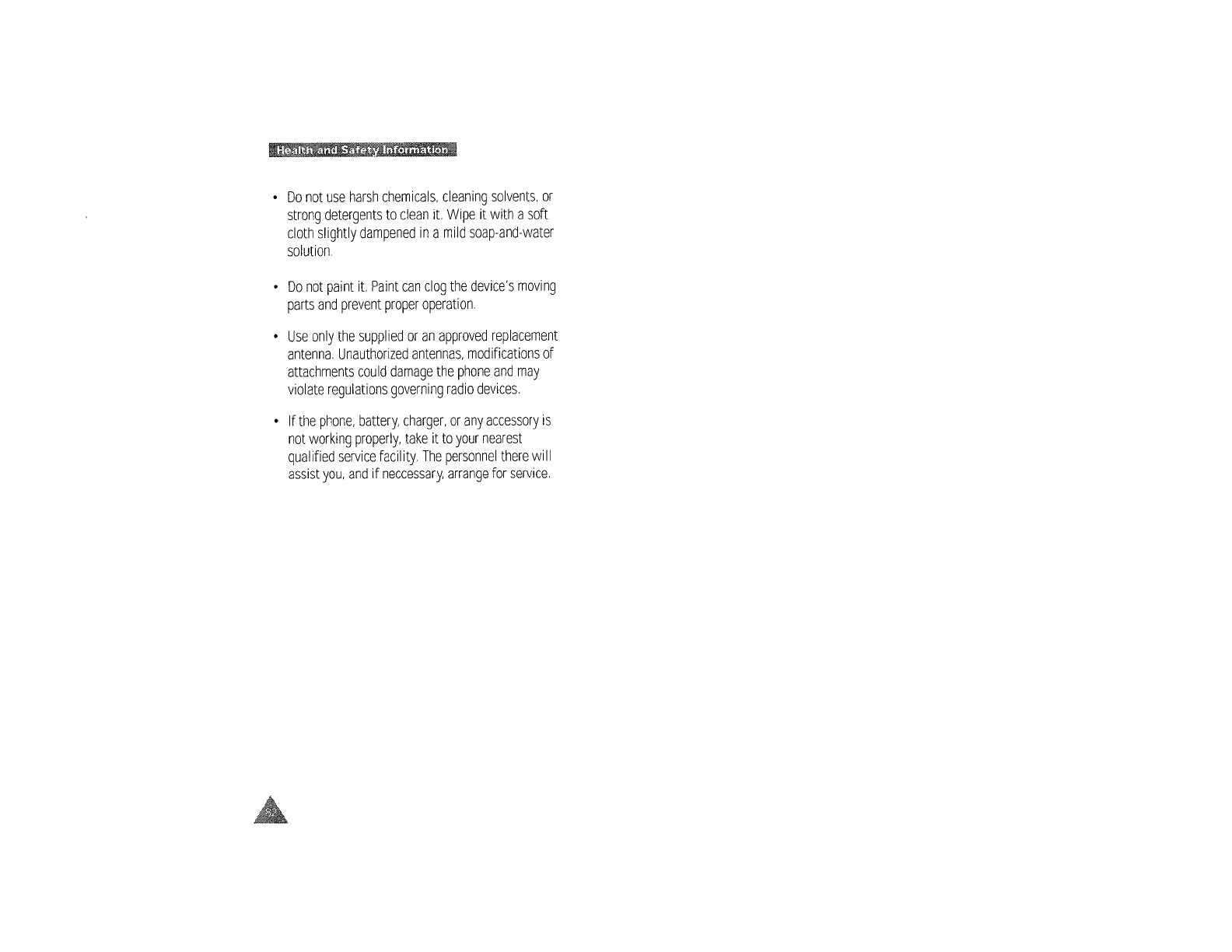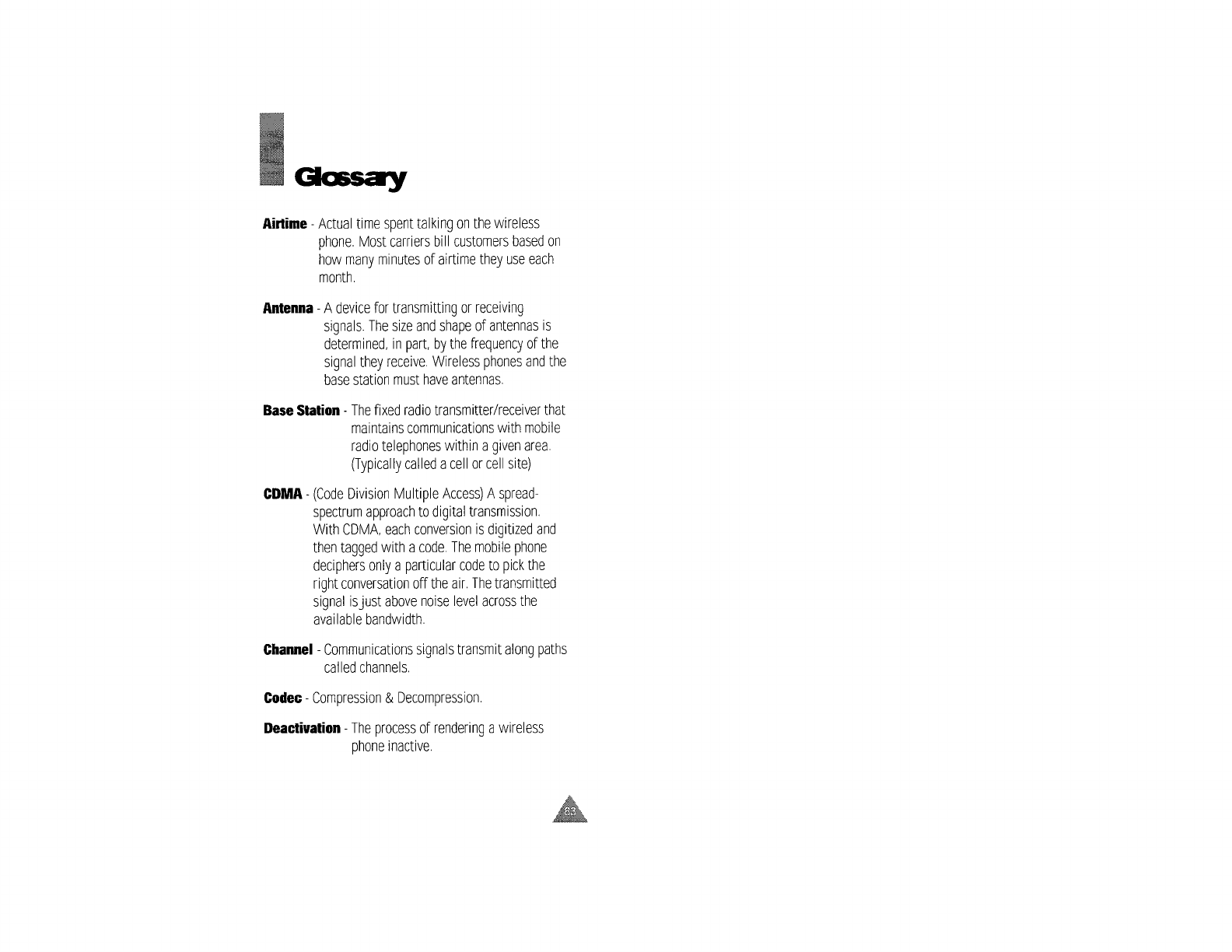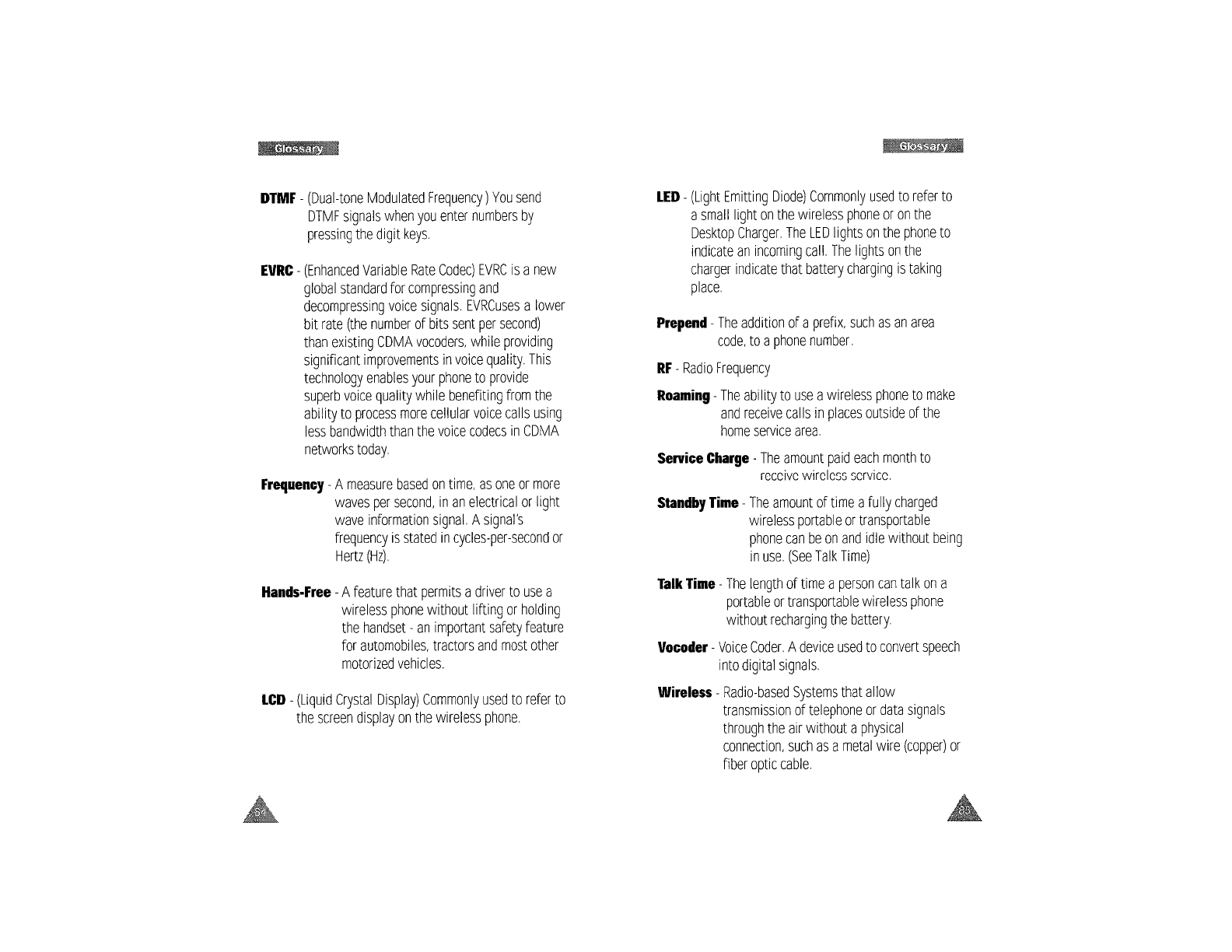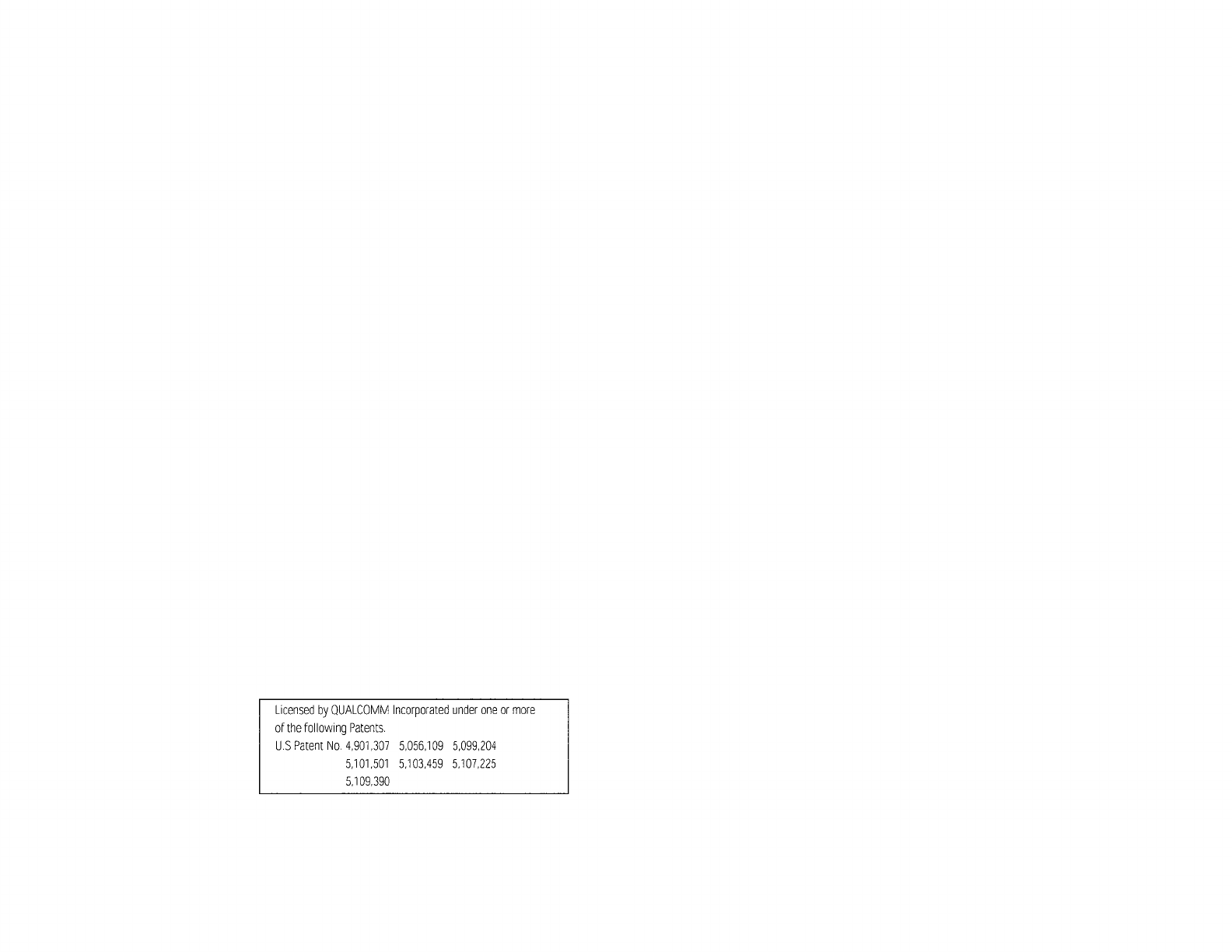Samsung Electronics Co SPHN240 Tri-Mode Dual-Band Analog/PCS Phone (AMPS/CDMA) User Manual
Samsung Electronics Co Ltd Tri-Mode Dual-Band Analog/PCS Phone (AMPS/CDMA) Users Manual
Users Manual
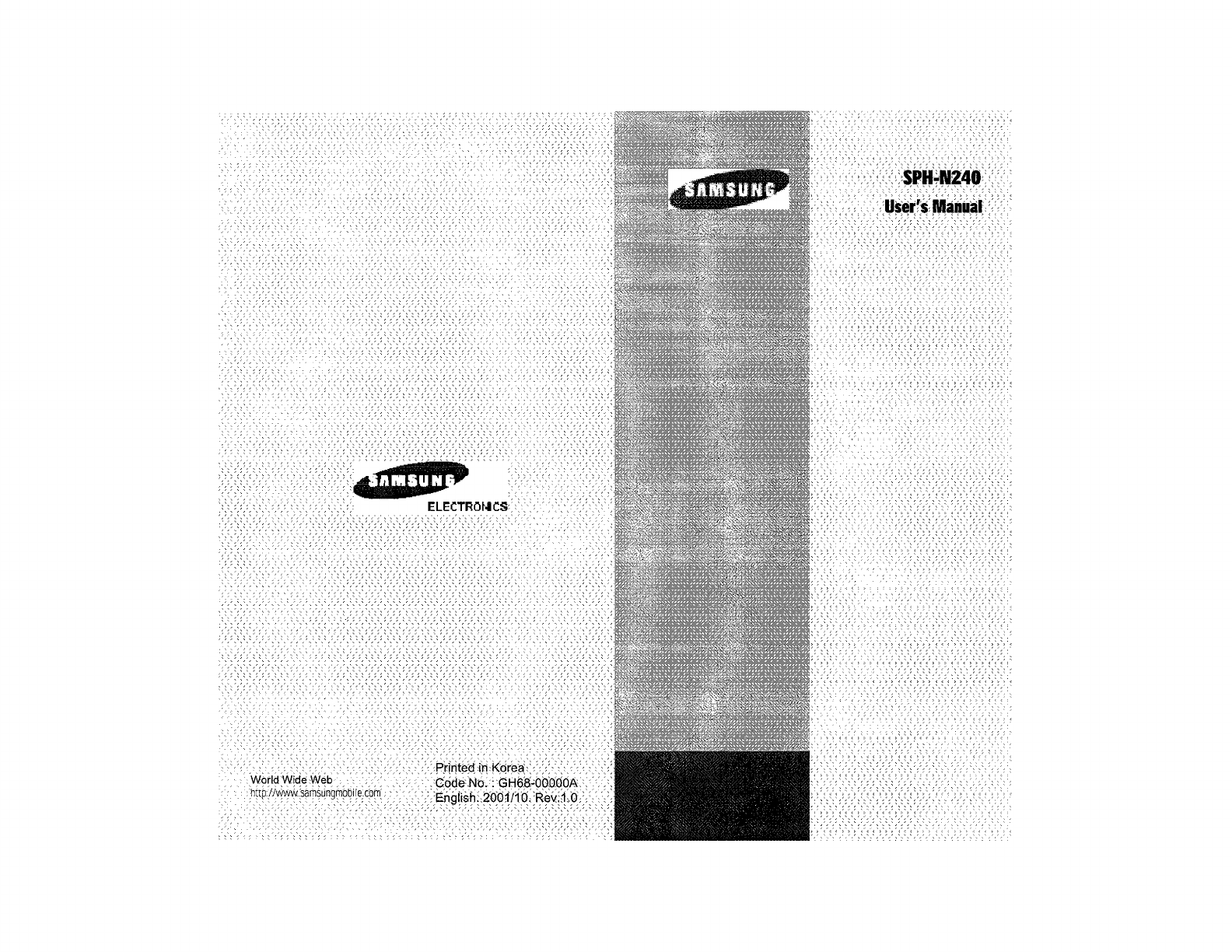
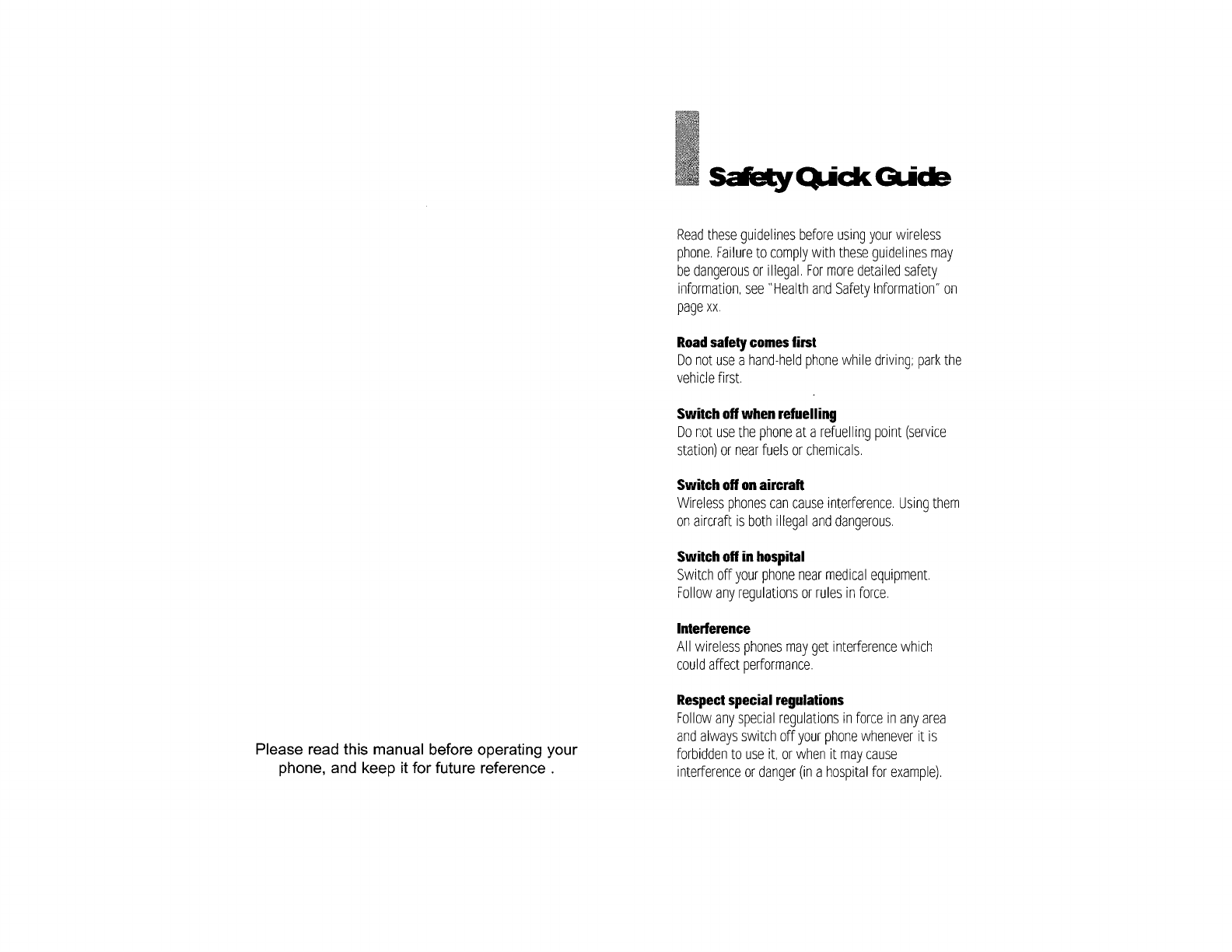
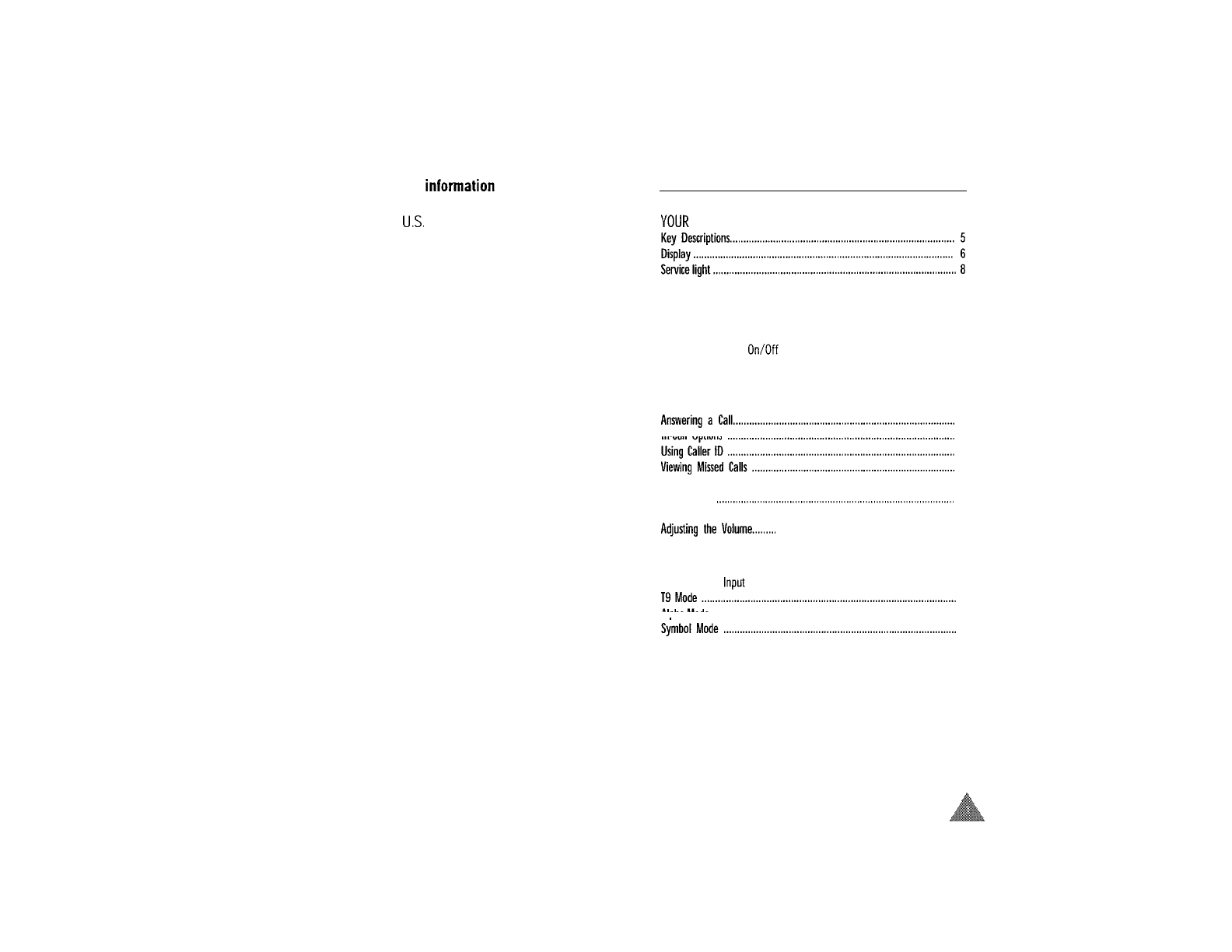
Radio frequency exposure information
In August
1996,
the Federal Communications
Commisision (FCC) of the U.S. adopted an updated
safety standard for human exposure to radio frequency
electromagnetic energy emitted by
FCC
regulated
transmitters. The design of this phone complies with the
FCC
guidelines and those standards
To
maintain compliance with
FCC
RF
exposure guidelines,
use only third-party belt-clips, holsters and similar
accessories that do not contain metallic components in its
assembly.
If you do not use a body
-
worn accessory, ensure the
antenna is at least 0.6 inch (1.5cm) from your body
when transmitting. Use of non
-
approved accessories
may violate
FCC
RF
exposure guidelines.
Use sensibly
Use only in the normal position (to ear). Avoid unnessary
contact with the antenna when the phone is switched
on.
Accessories and batteries
Use only SAMSUNG
-
approved accessories and
batteries.
Table
of
Contents
YOUR PHONE
GETTING STARTED
Charging a Battery
.................................................................................
9
low Battery Indicator
..........................................................................
10
Switching the Phone On/Off
................................................................
11
CALL FUNCTIONS
Making a Call
......................................................................................
12
18
In
-
Call Options
....................................................................................
19
20
21
Three
-
Way Calling
...............................................................................
22
Call Waiting
........................................................................................
23
Call Forwarding
....................................................................................
23
..................................................................
24
ENTERING TEXT
Changing
Text
Input Mode
...................................................................
25
26
Alpha Mode
..........................................................................................
27
29
Number Mode
.....................................................................................
29
Use qualified service
Only qualified service personnel may install or repair
your phone.
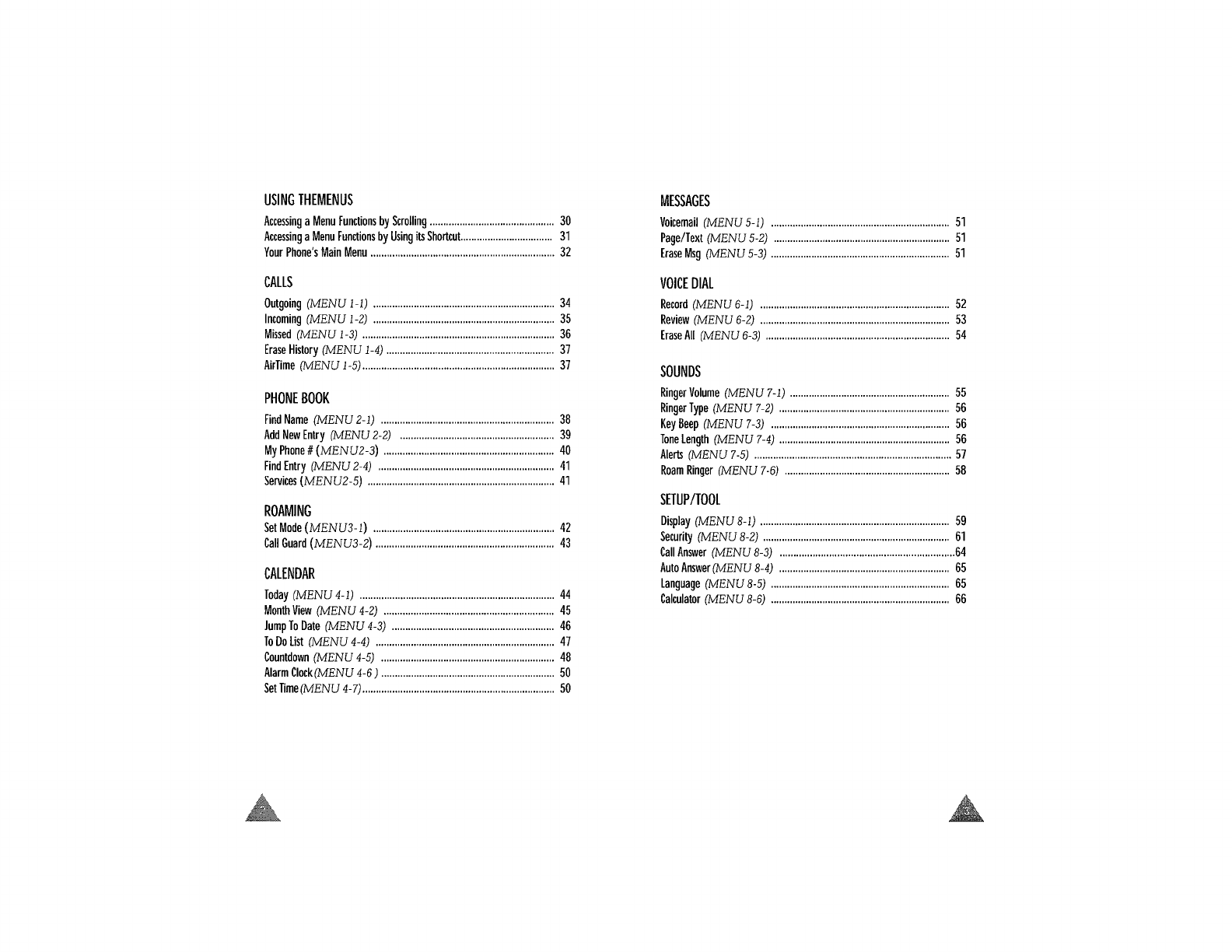
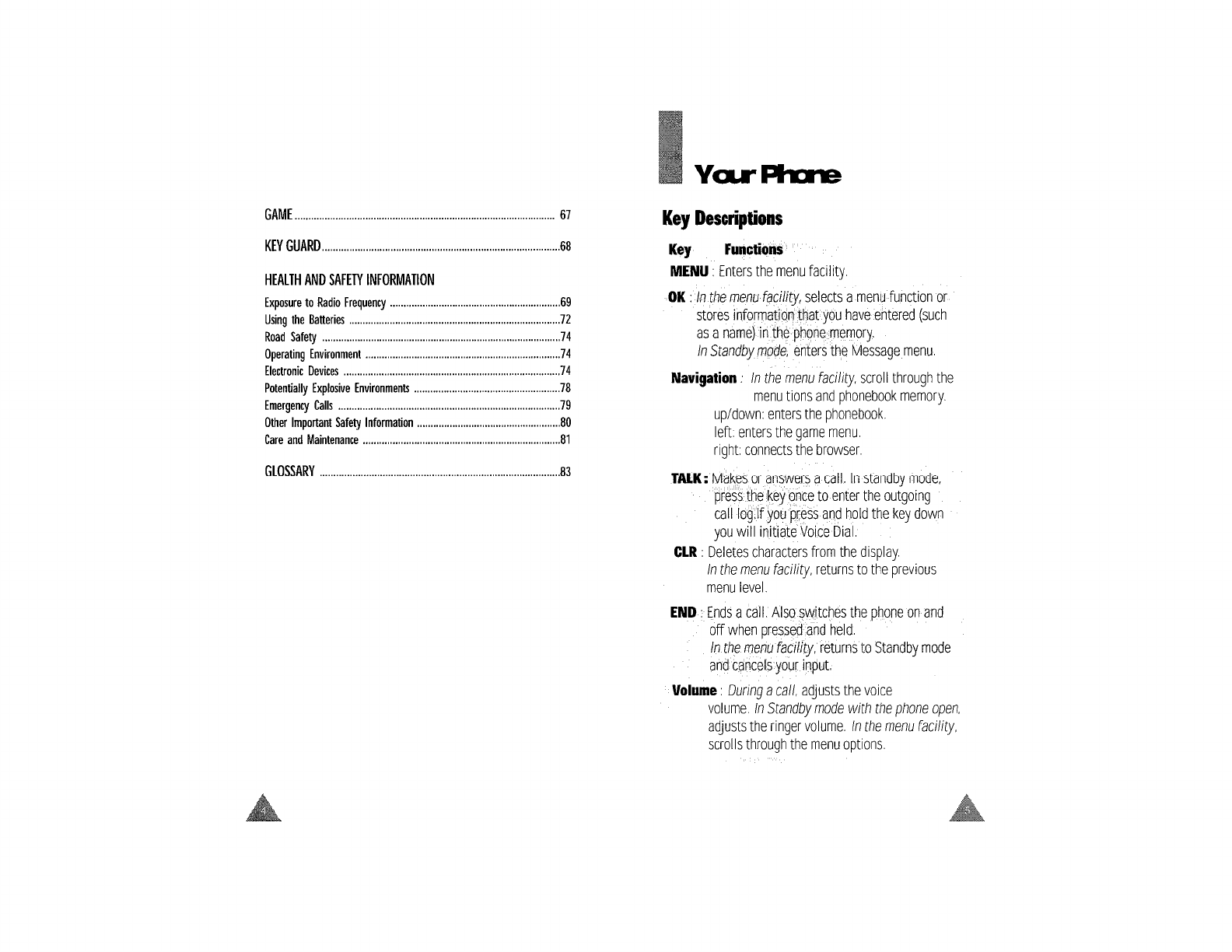
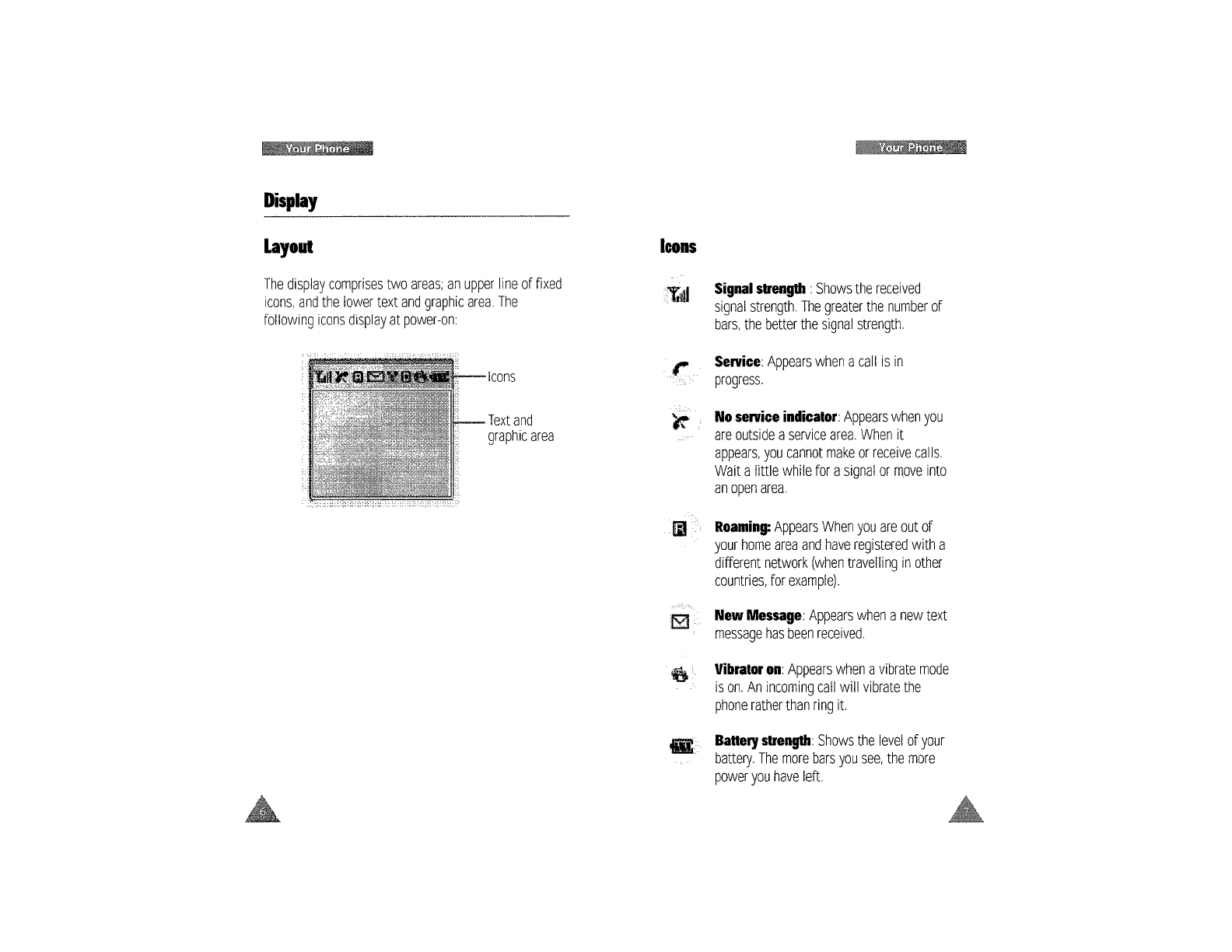

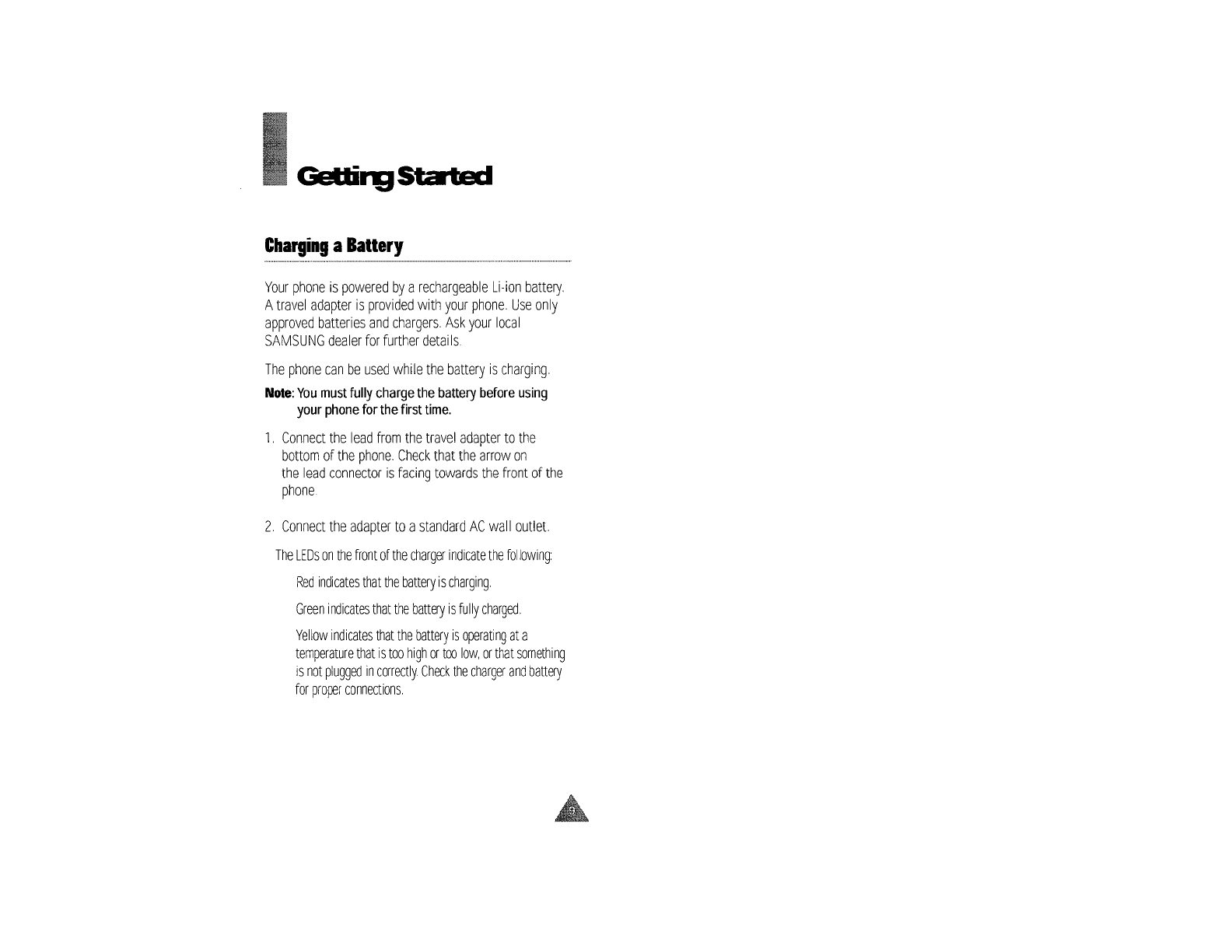
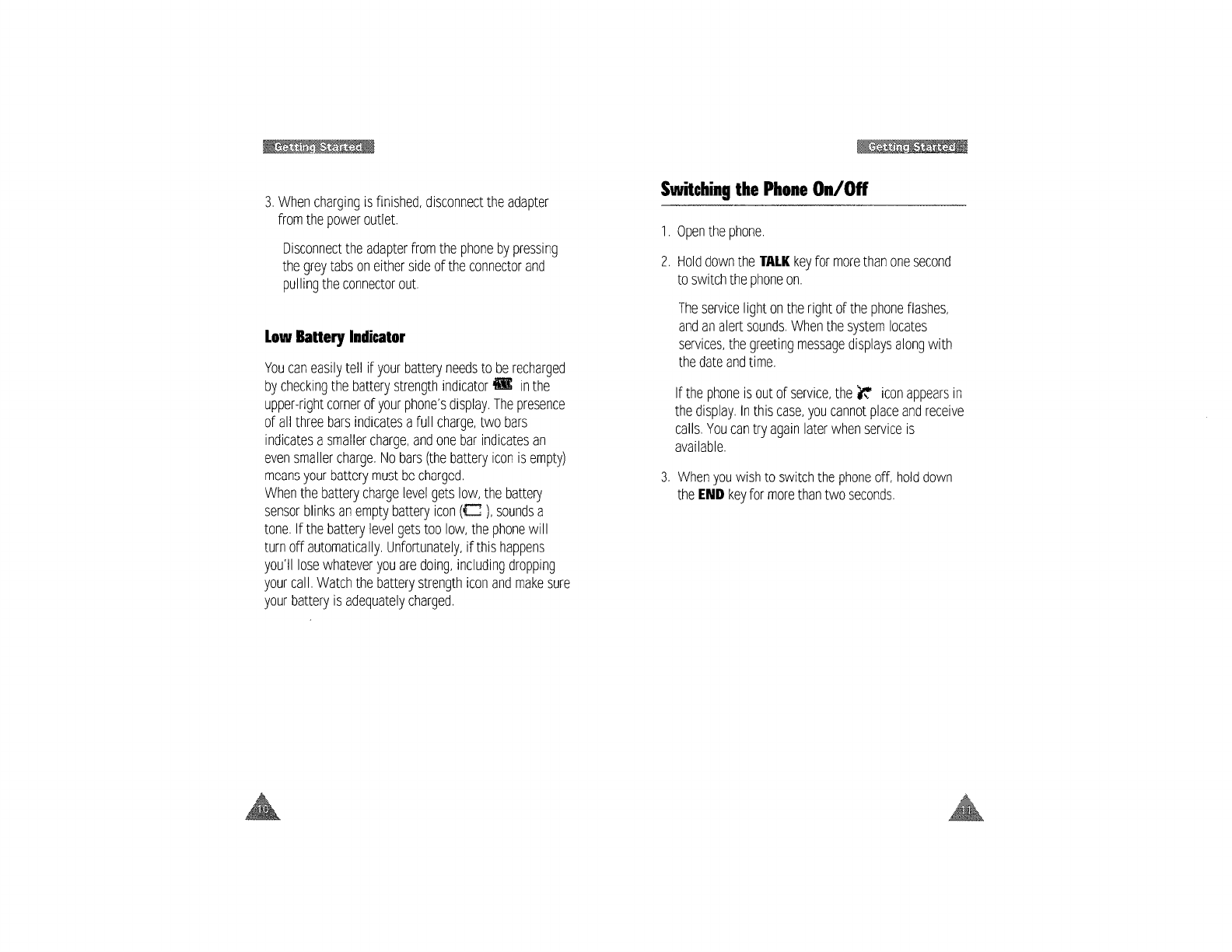
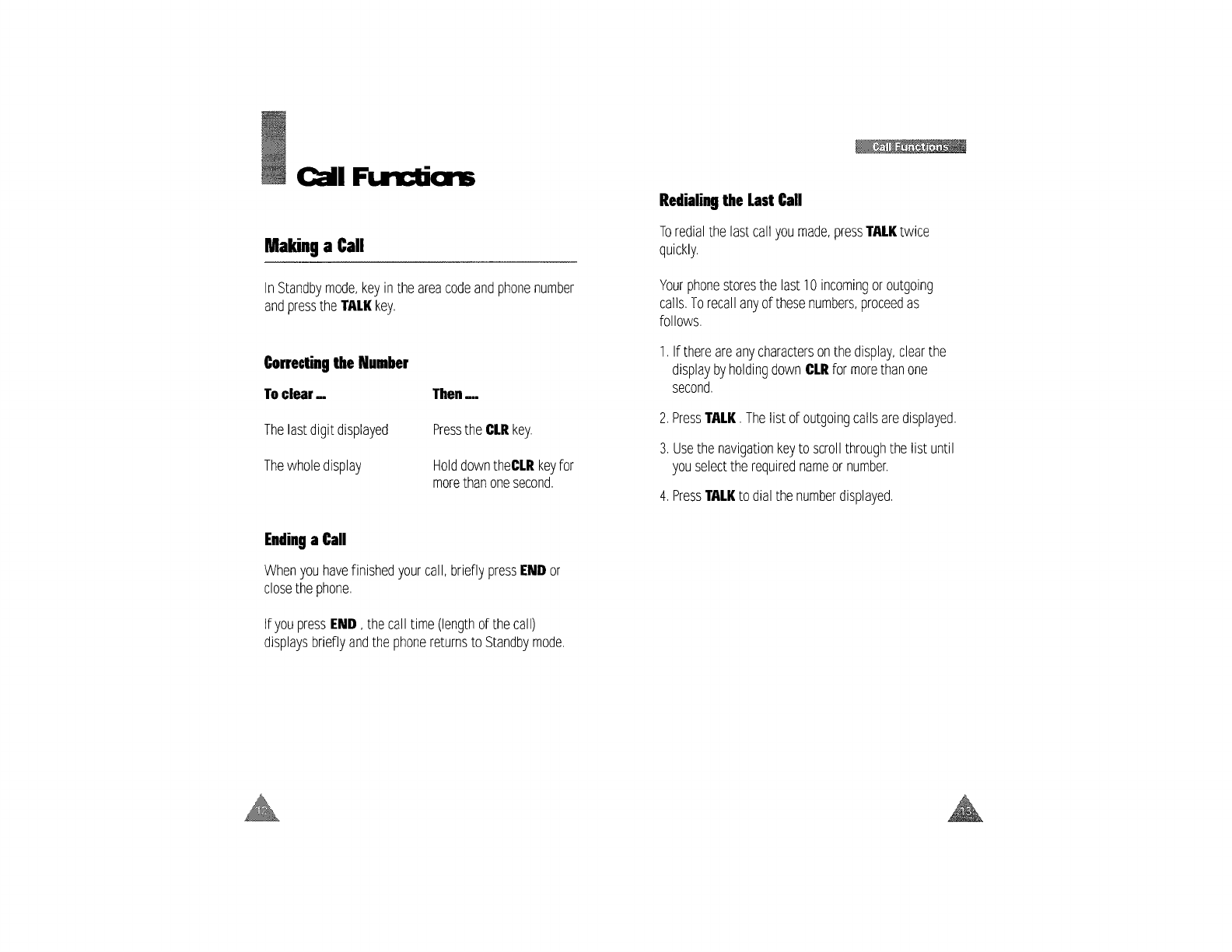
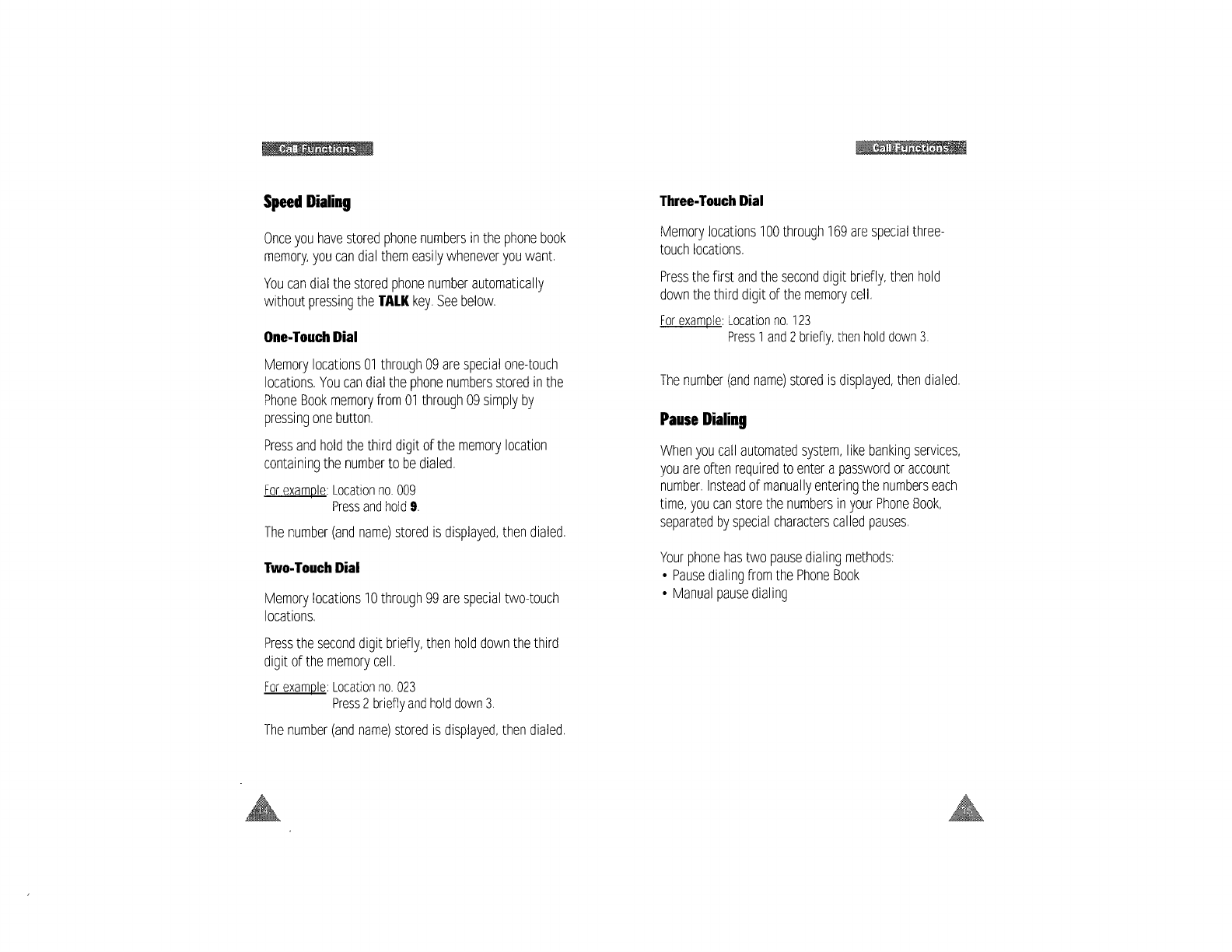

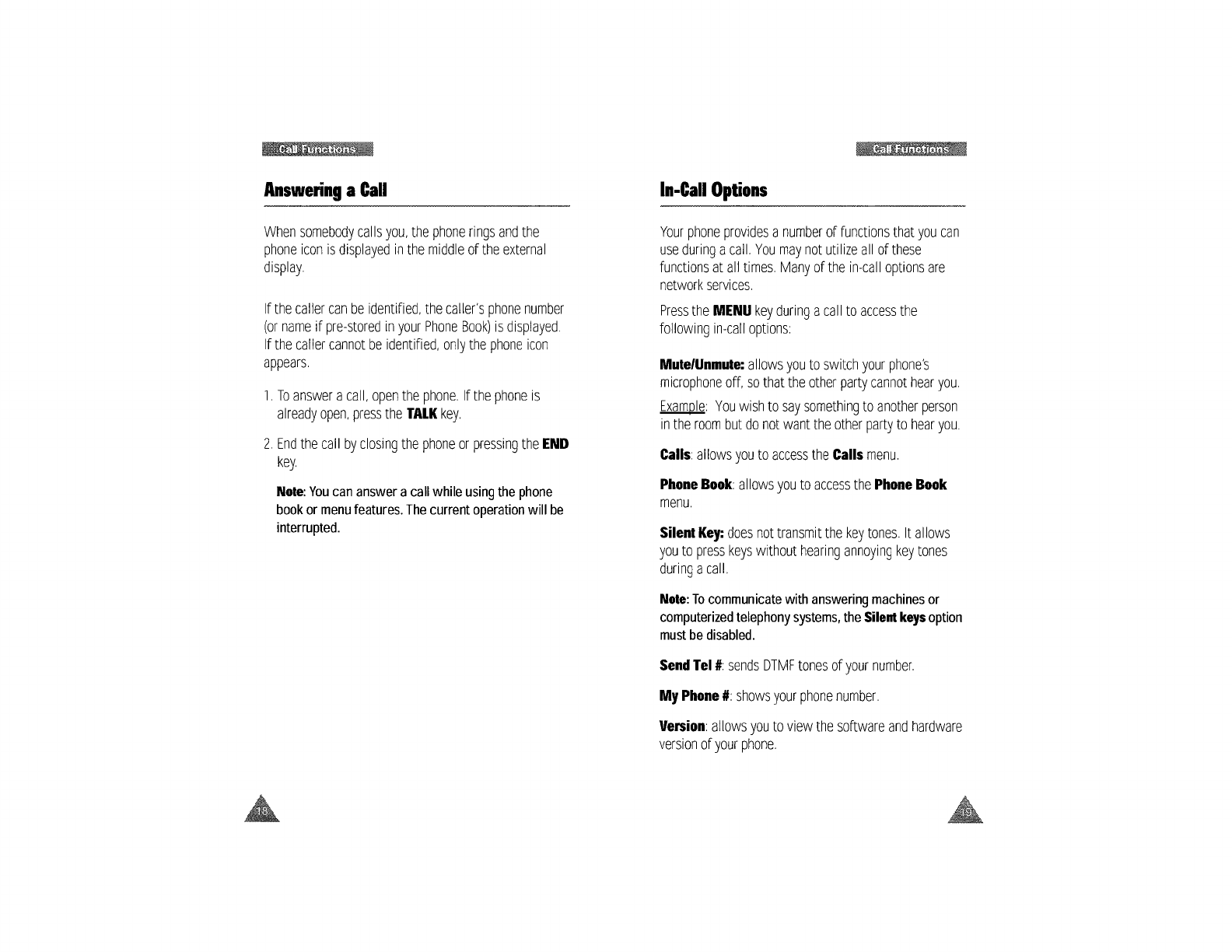
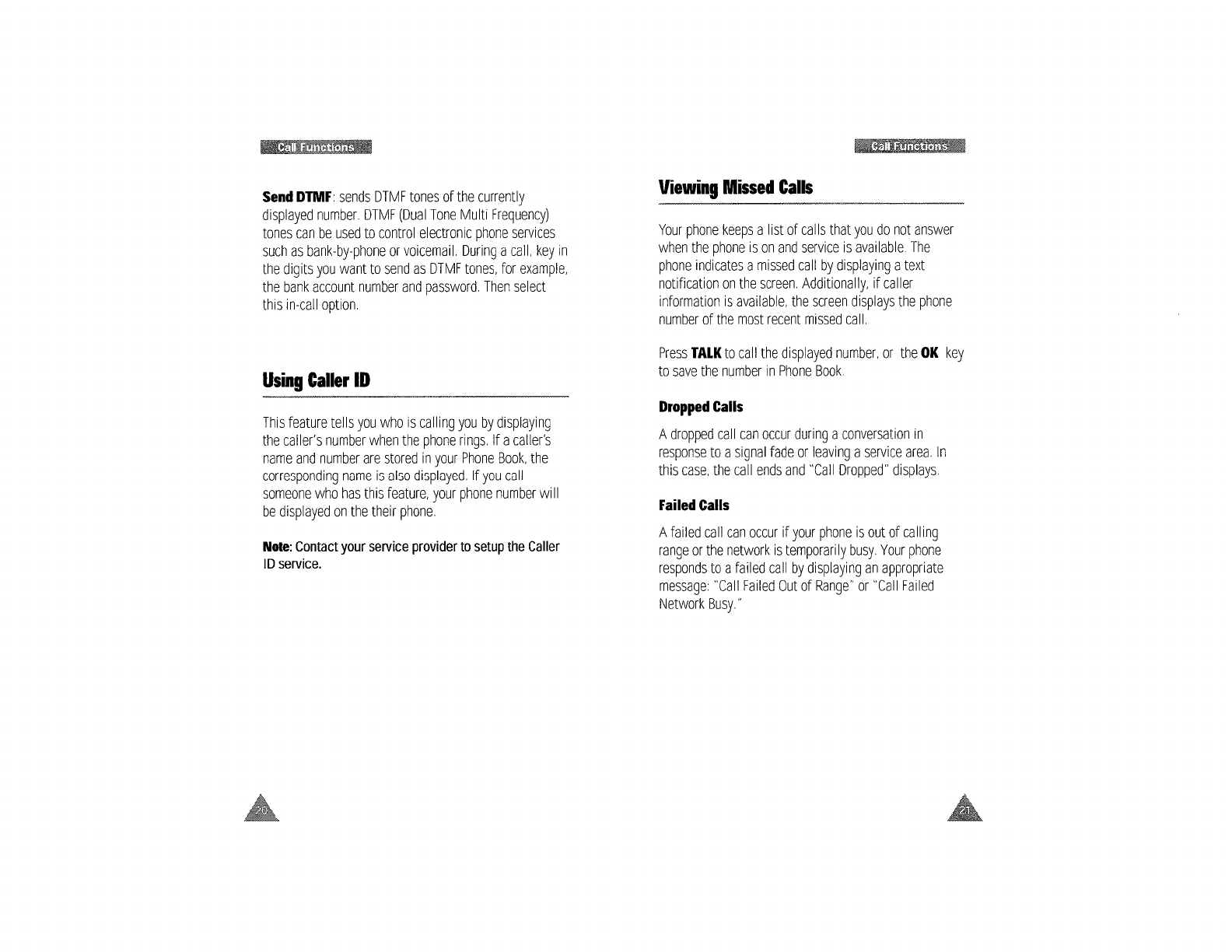
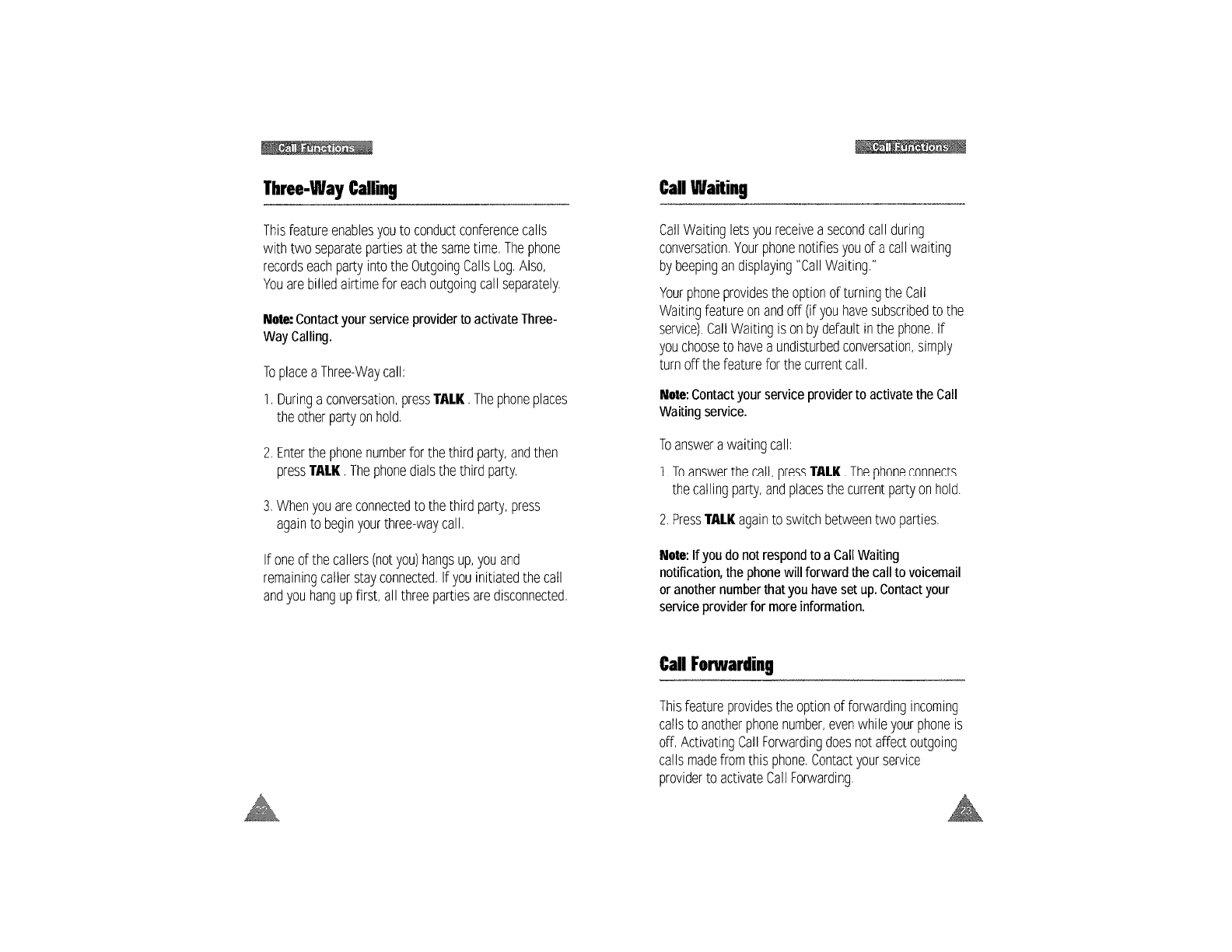
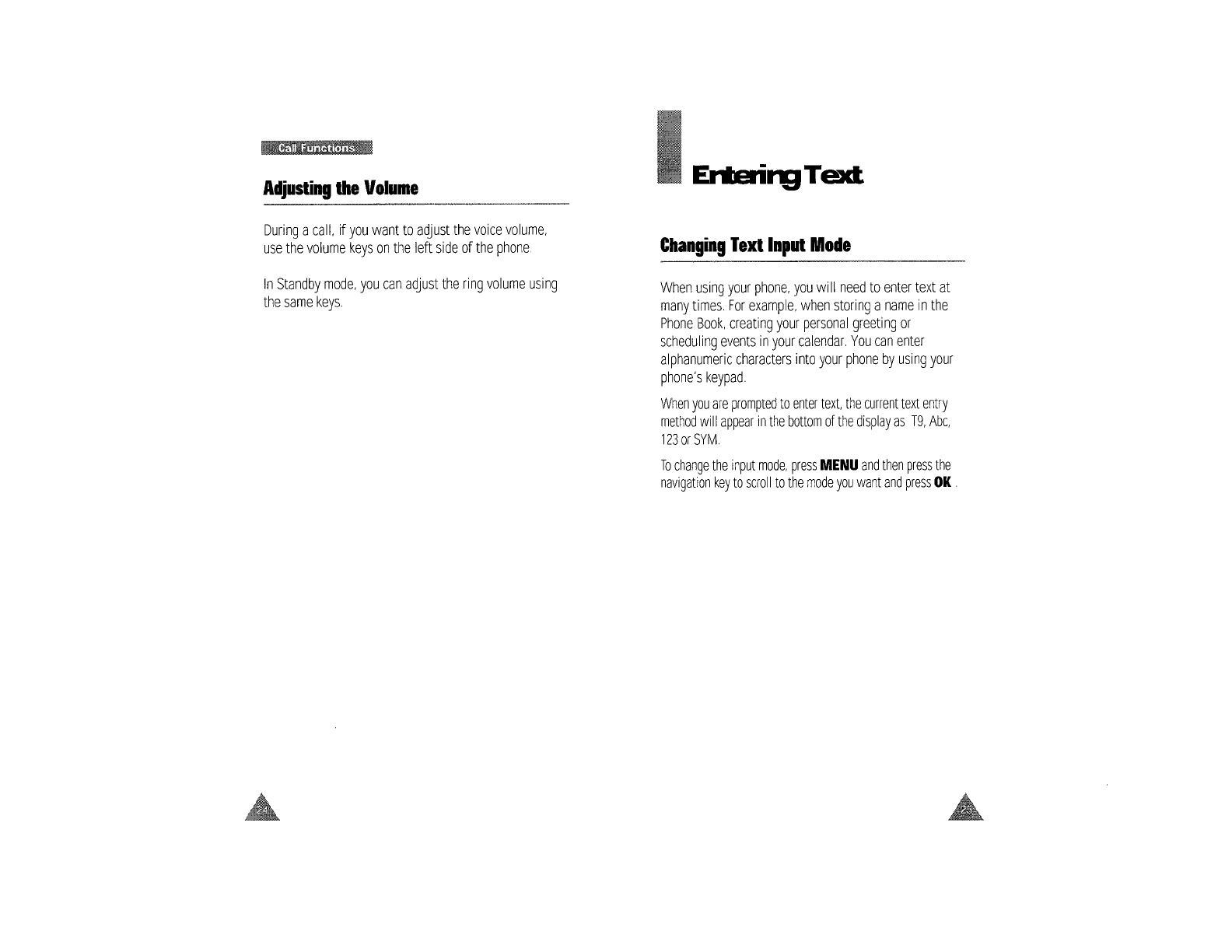

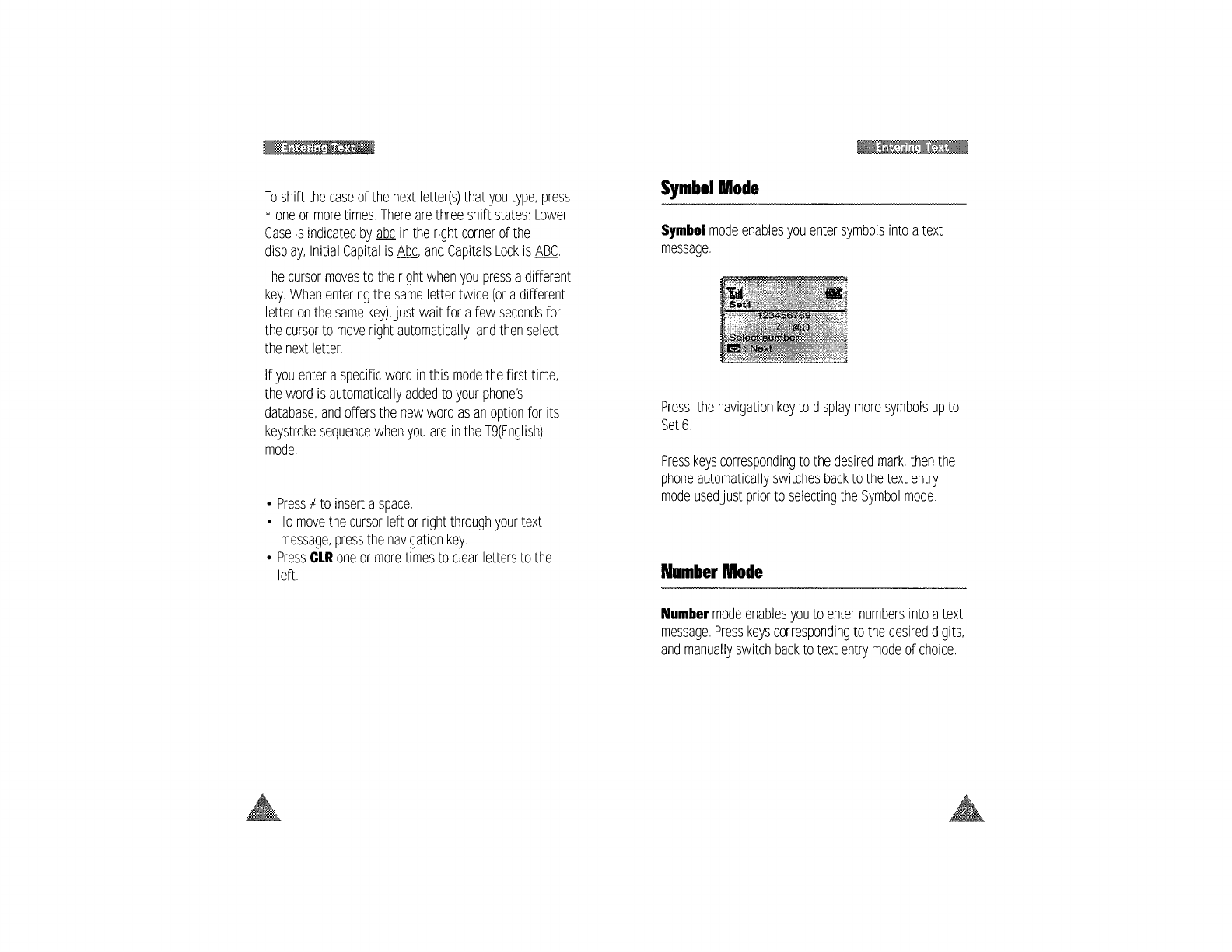
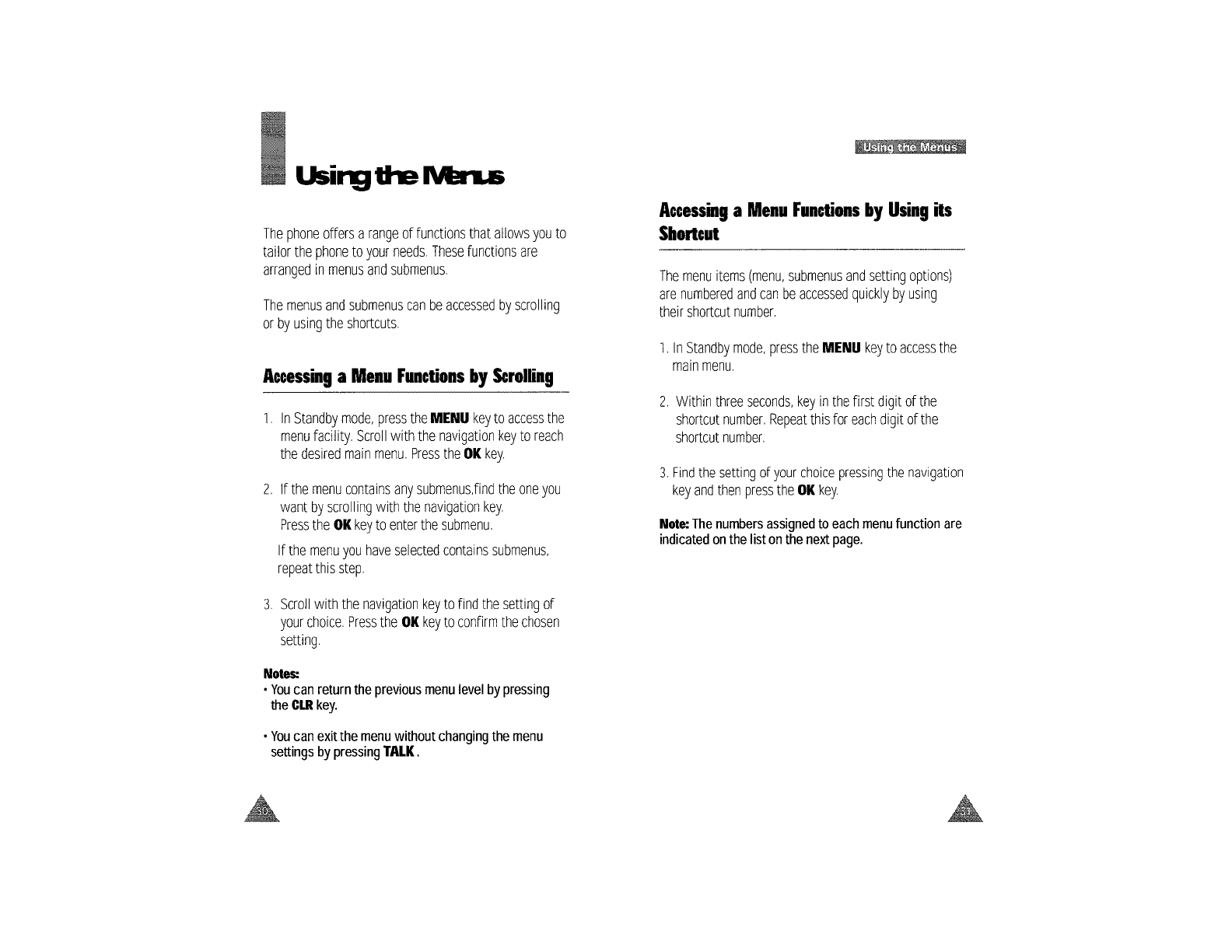
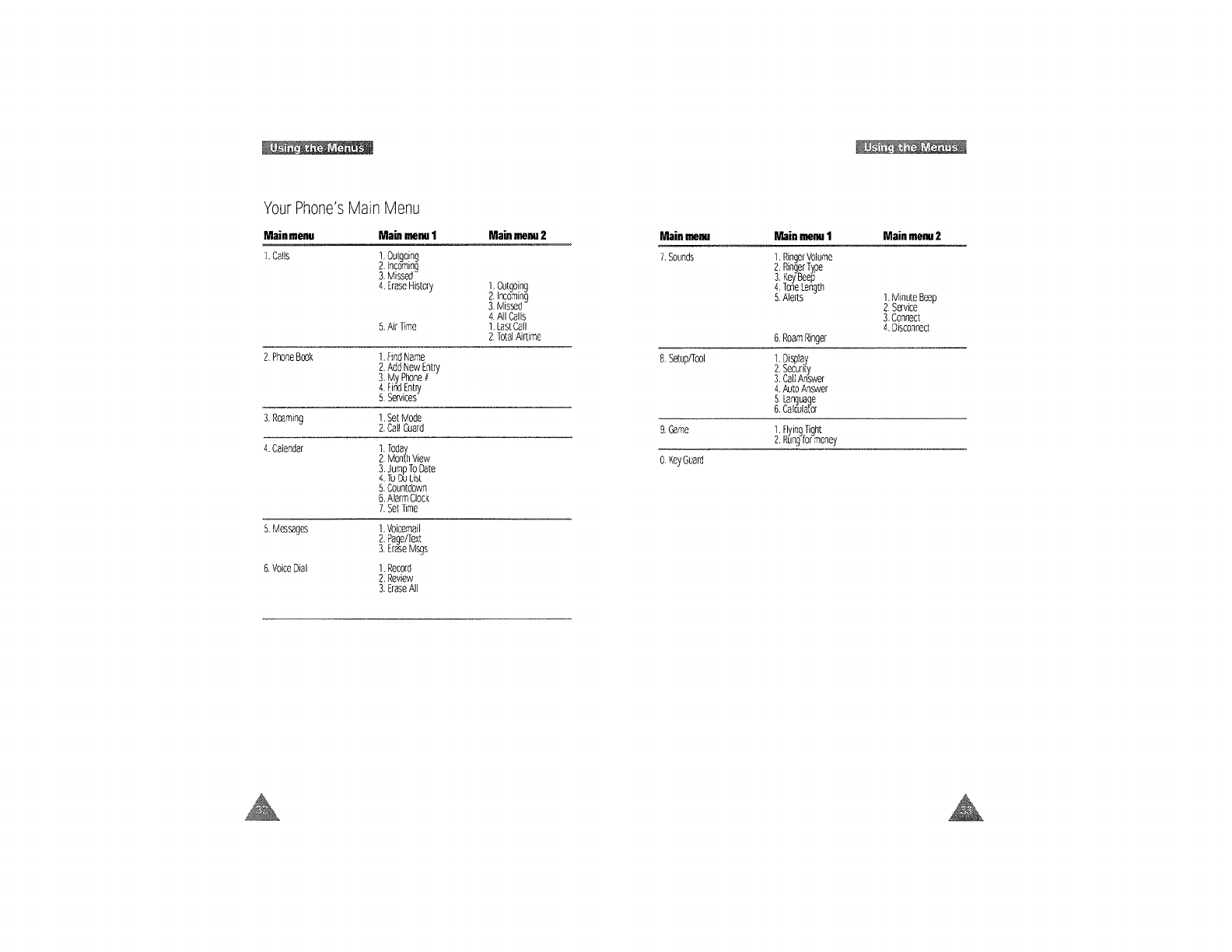
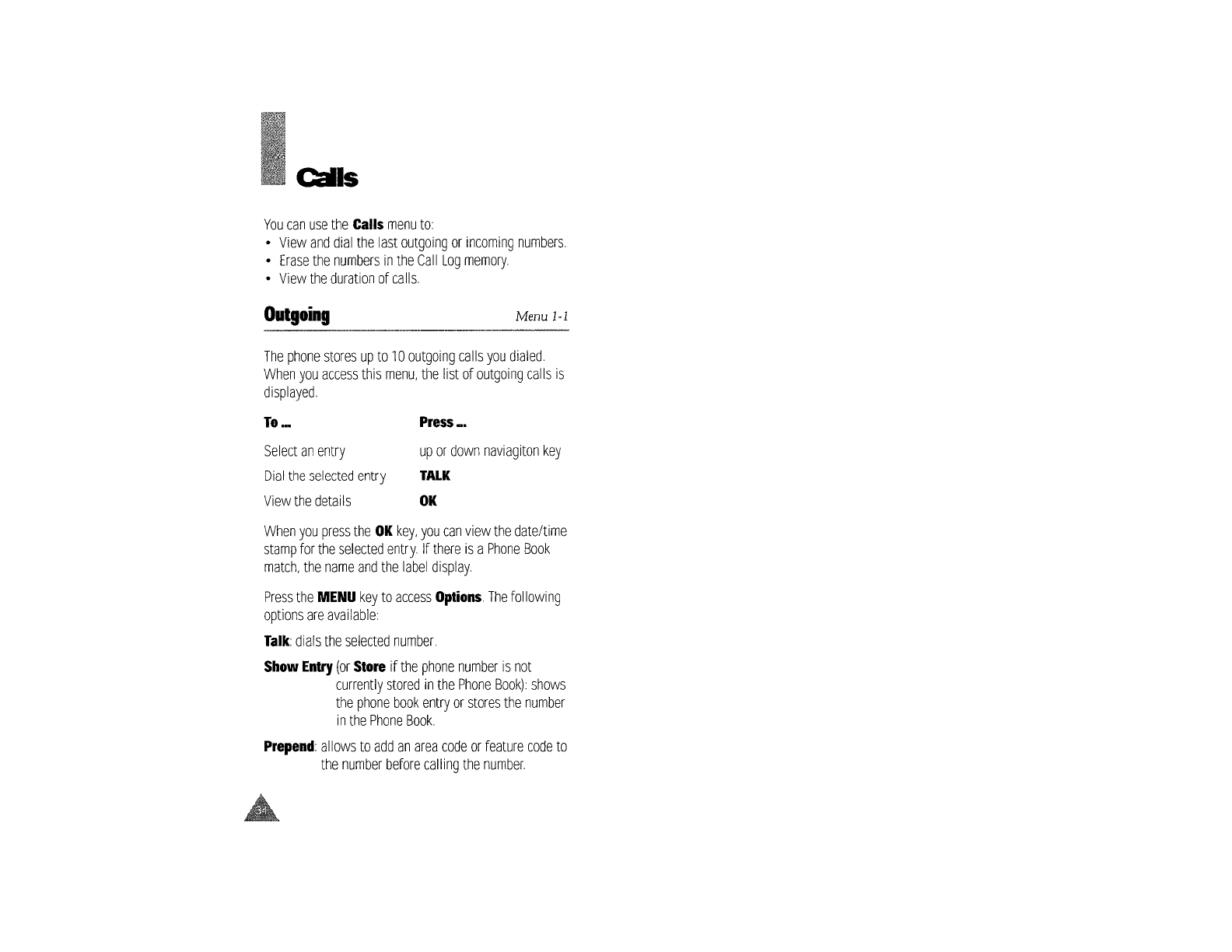
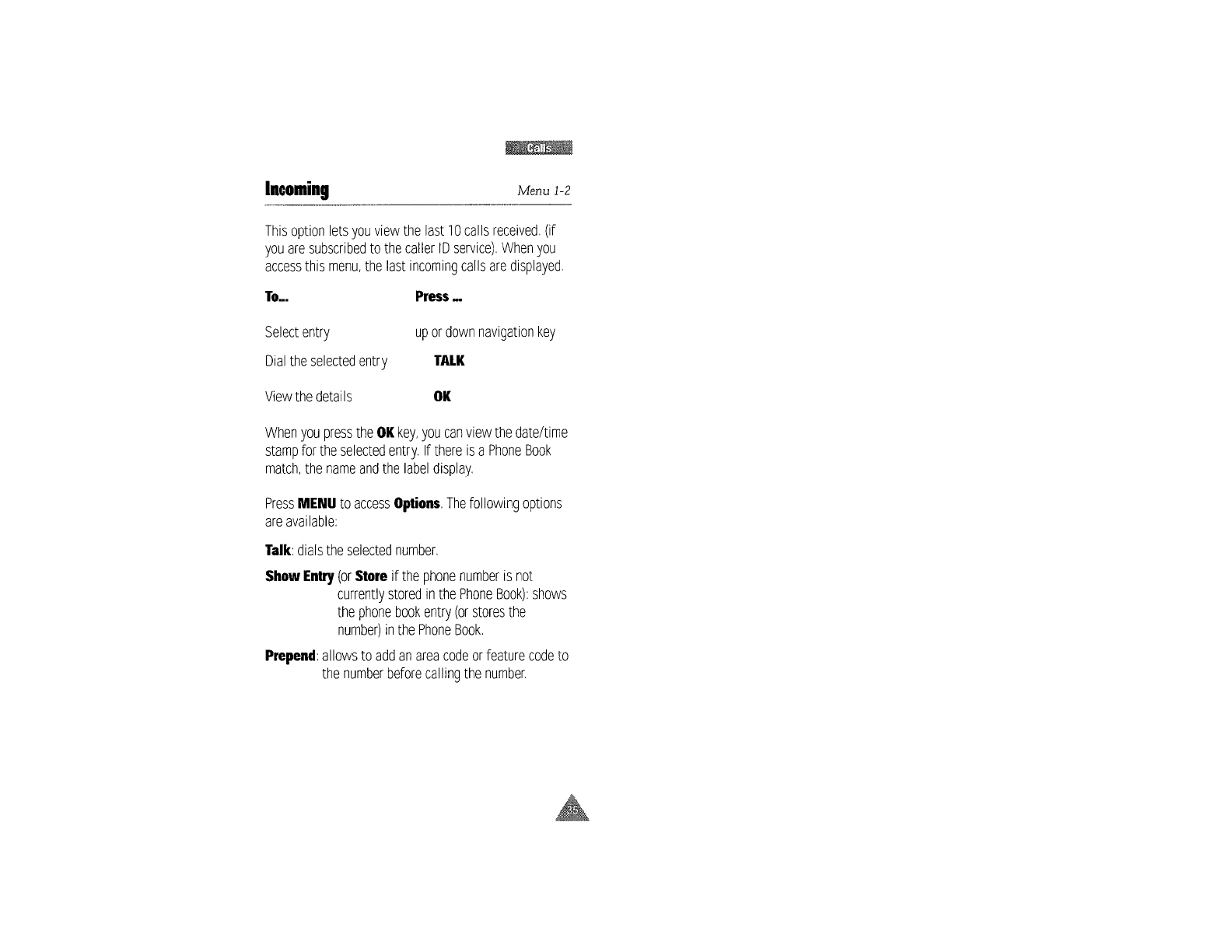
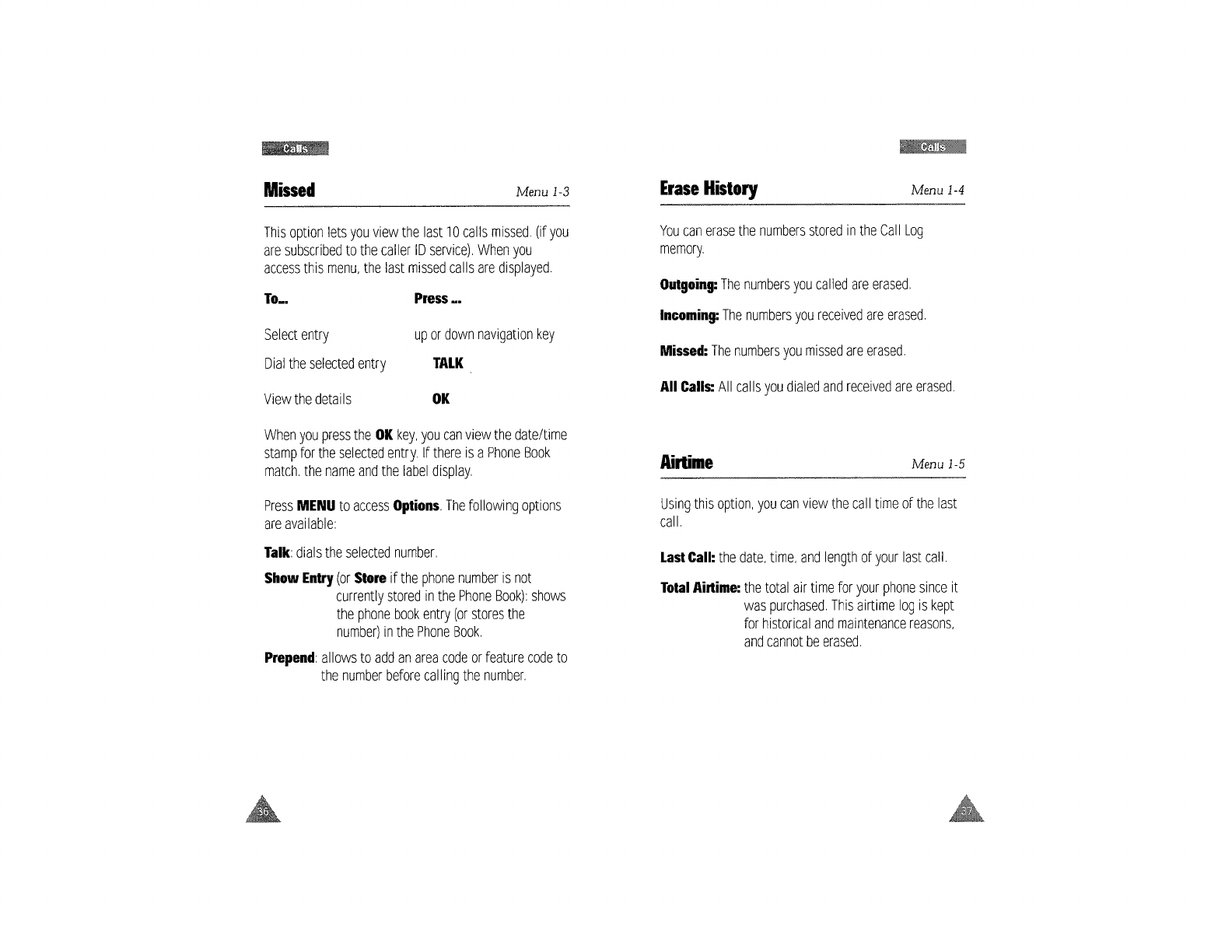
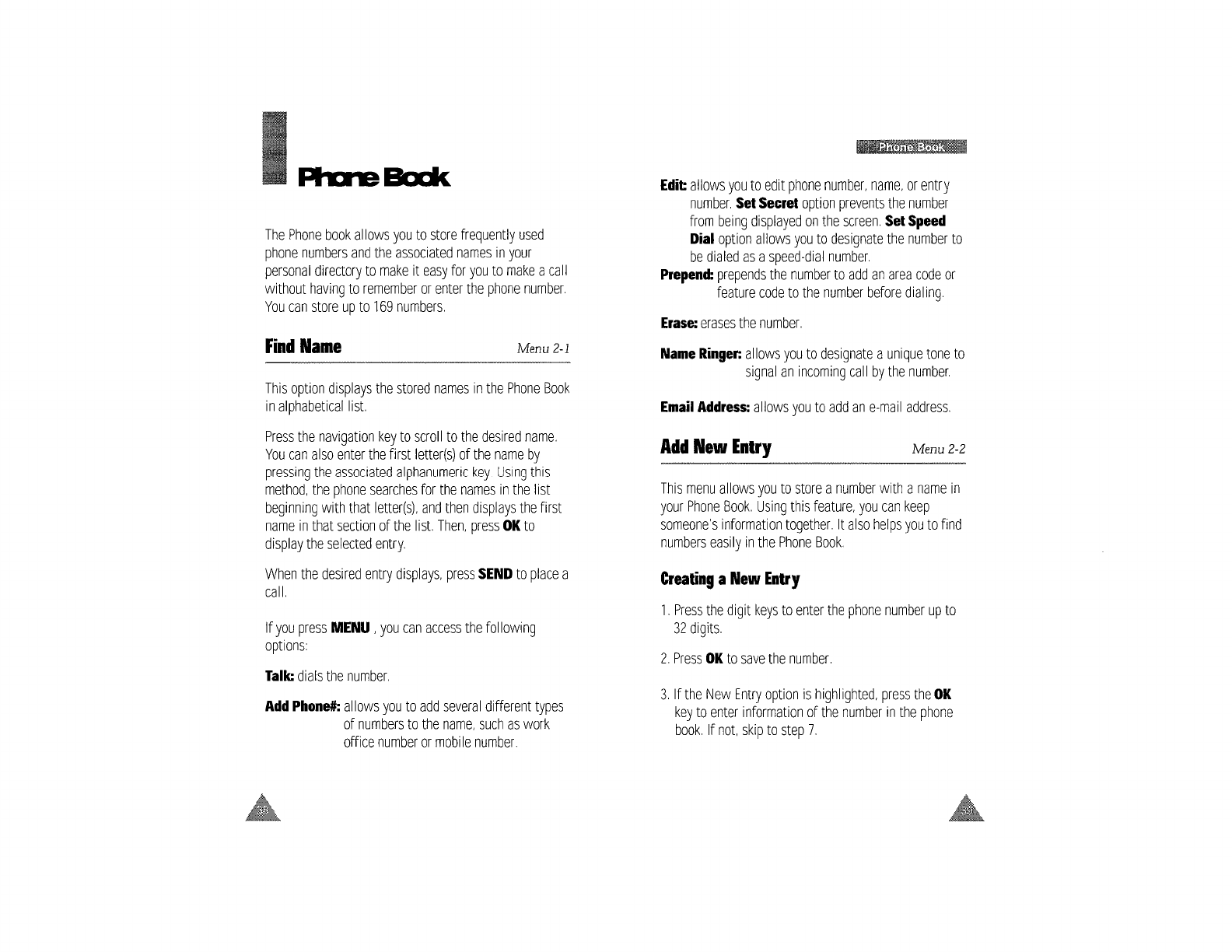
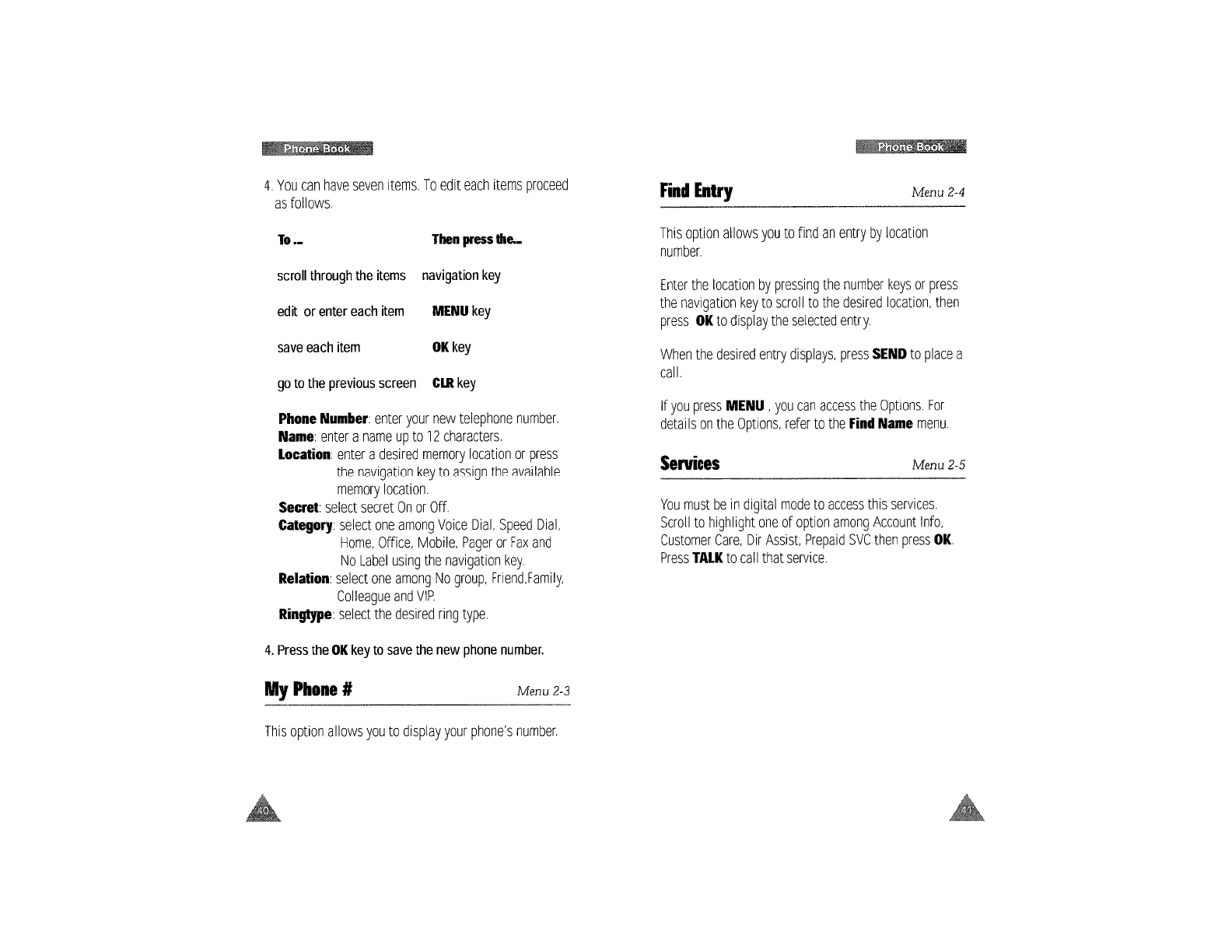
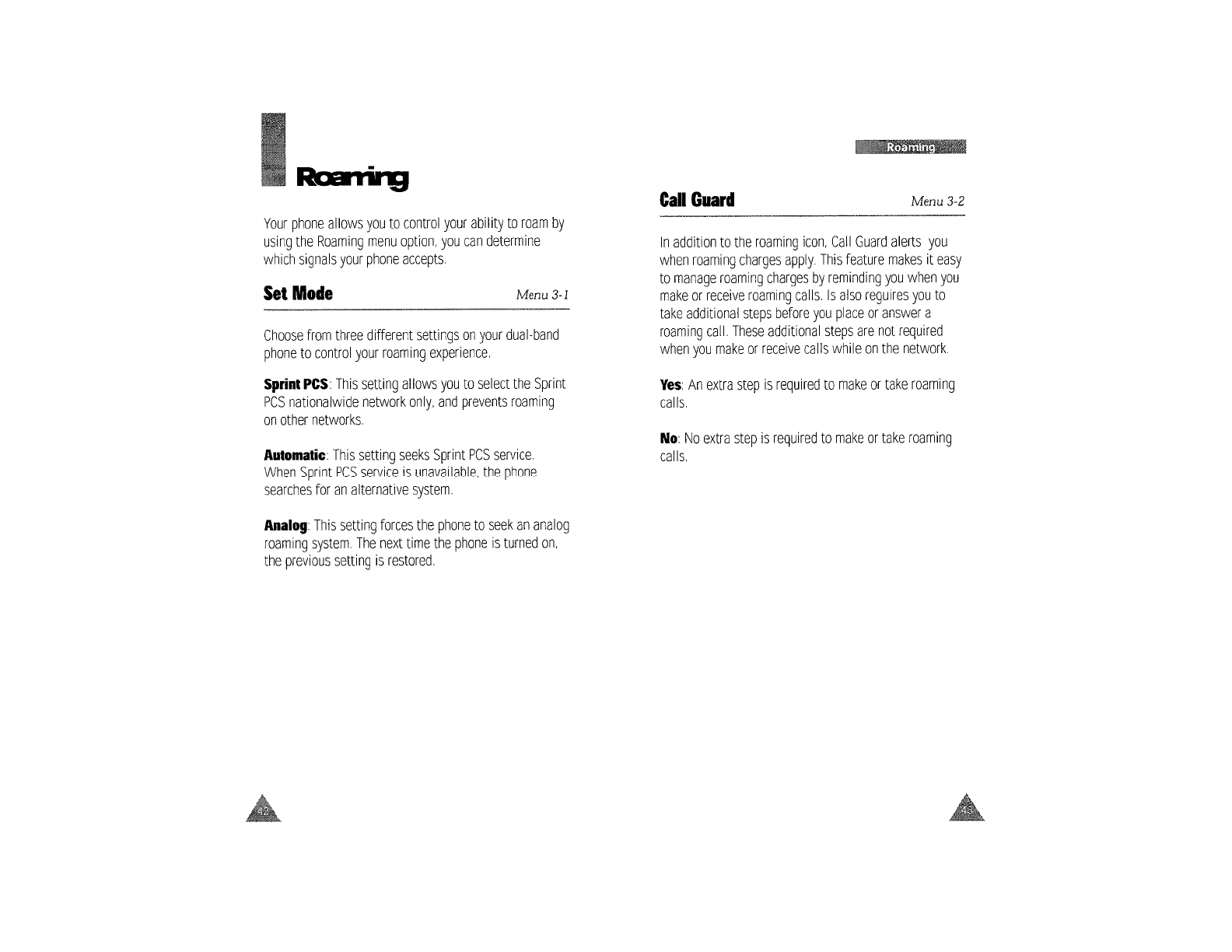
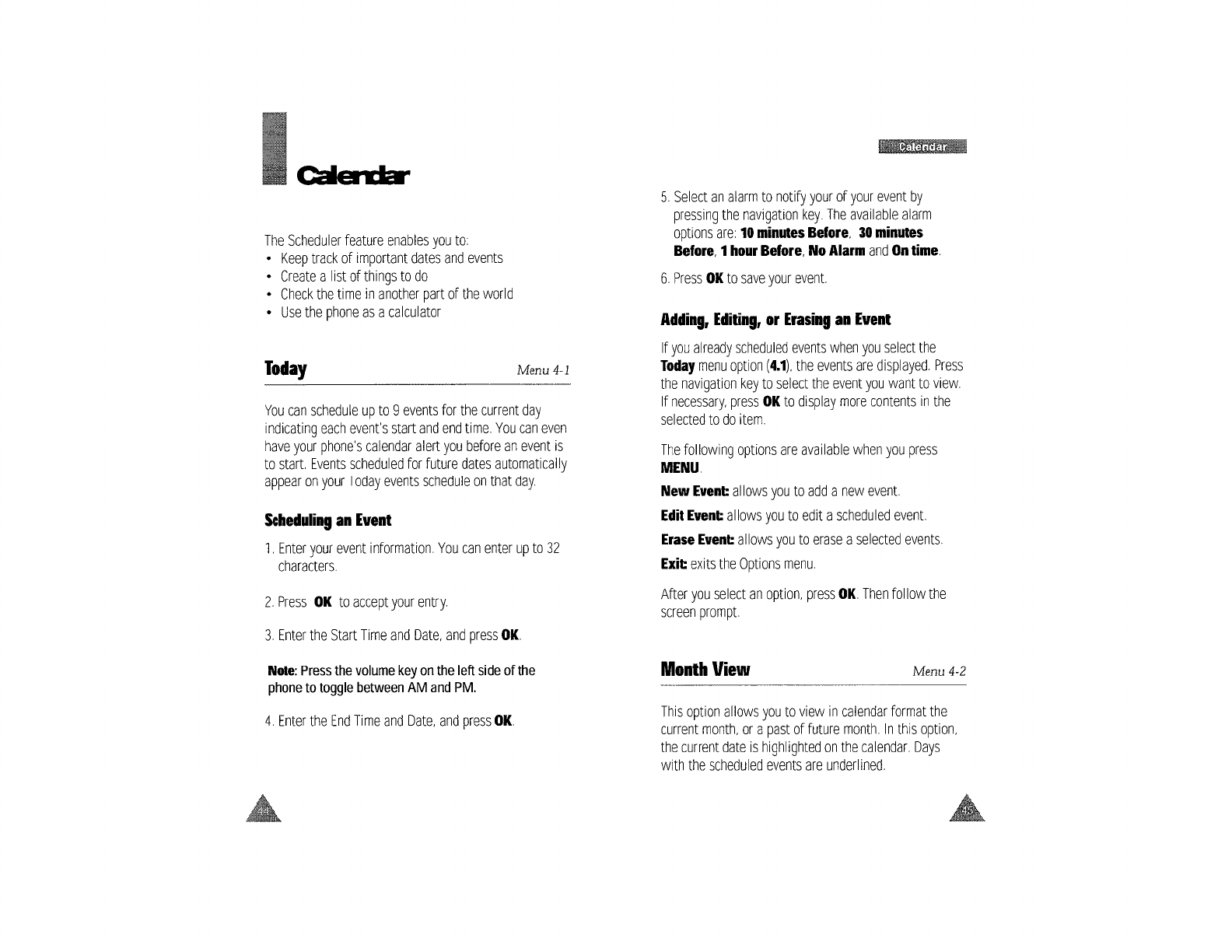
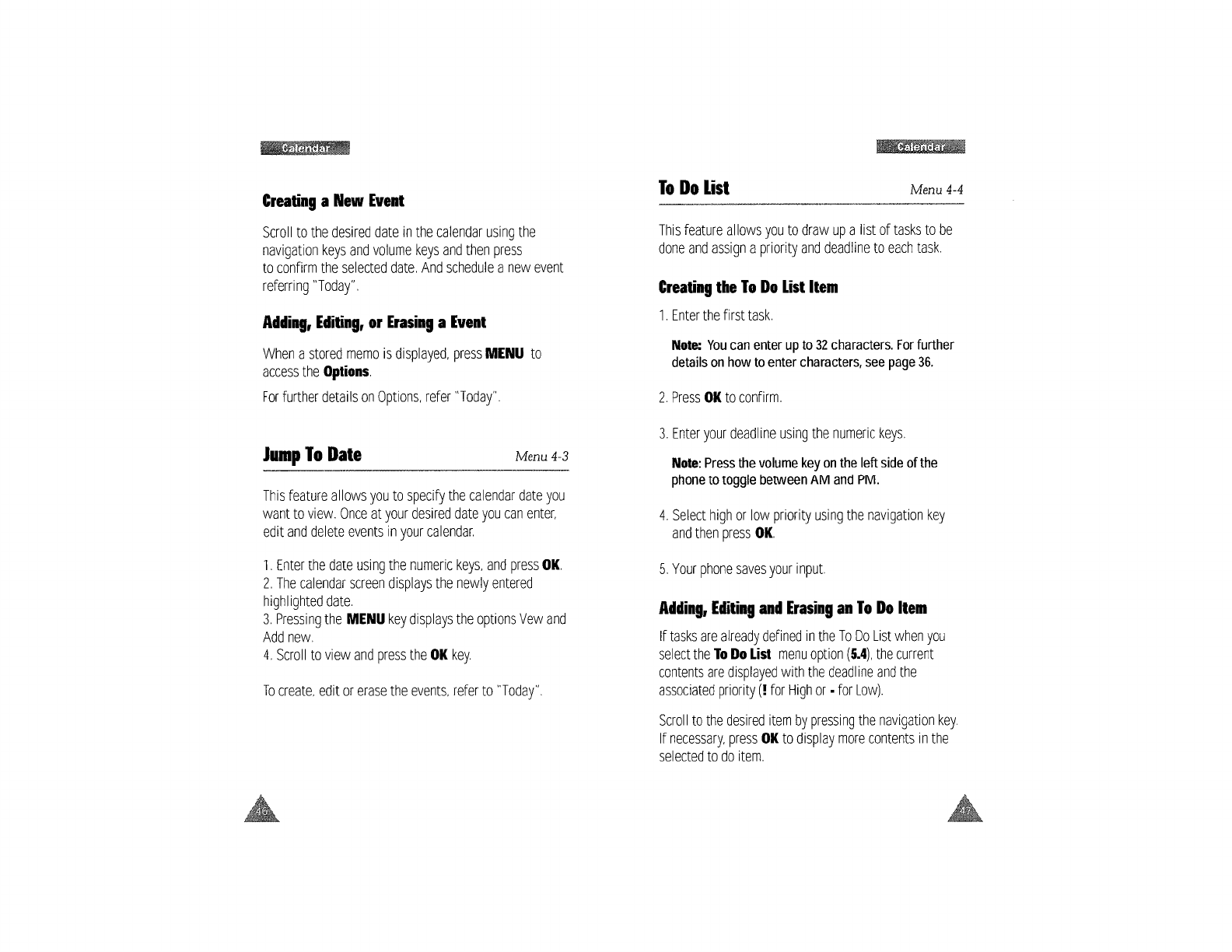
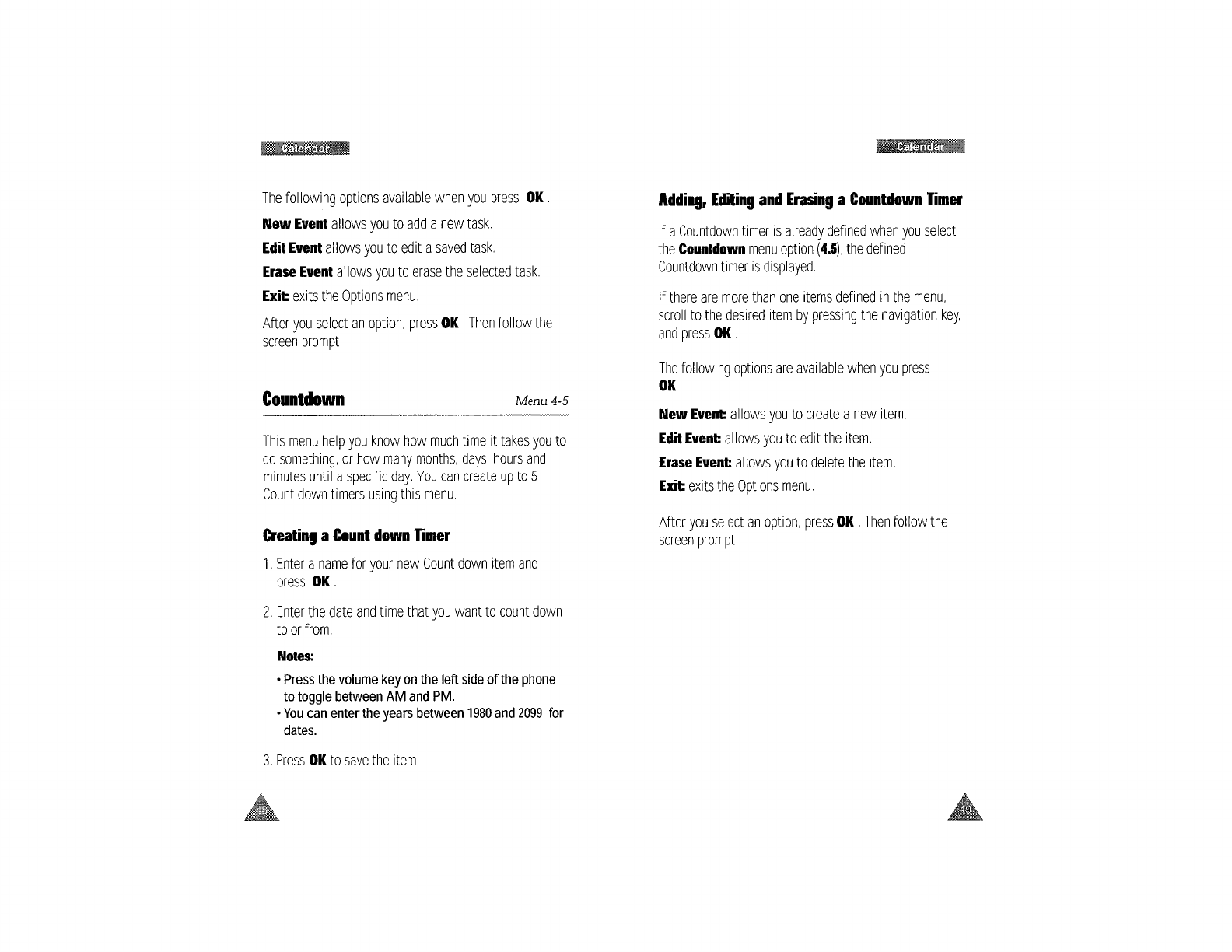
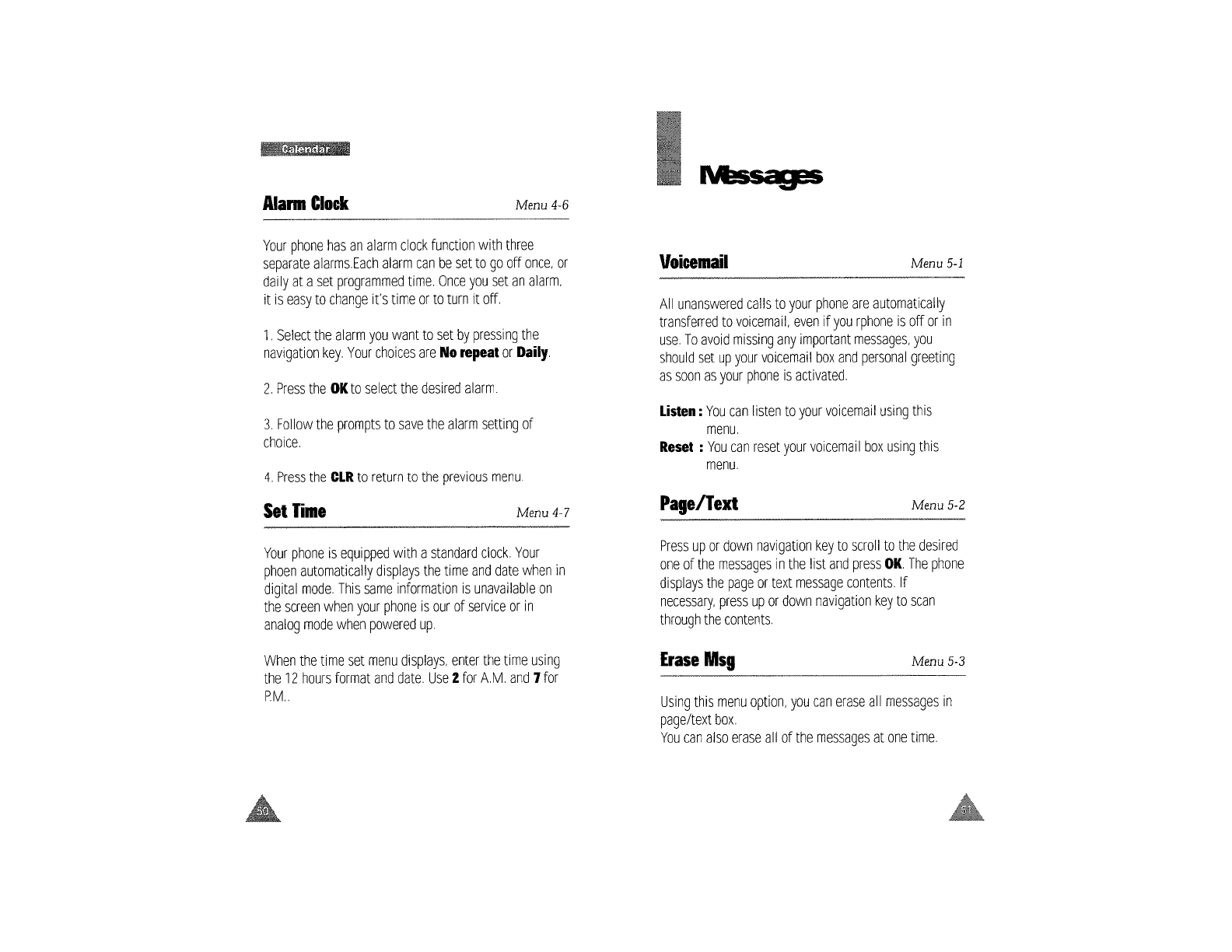
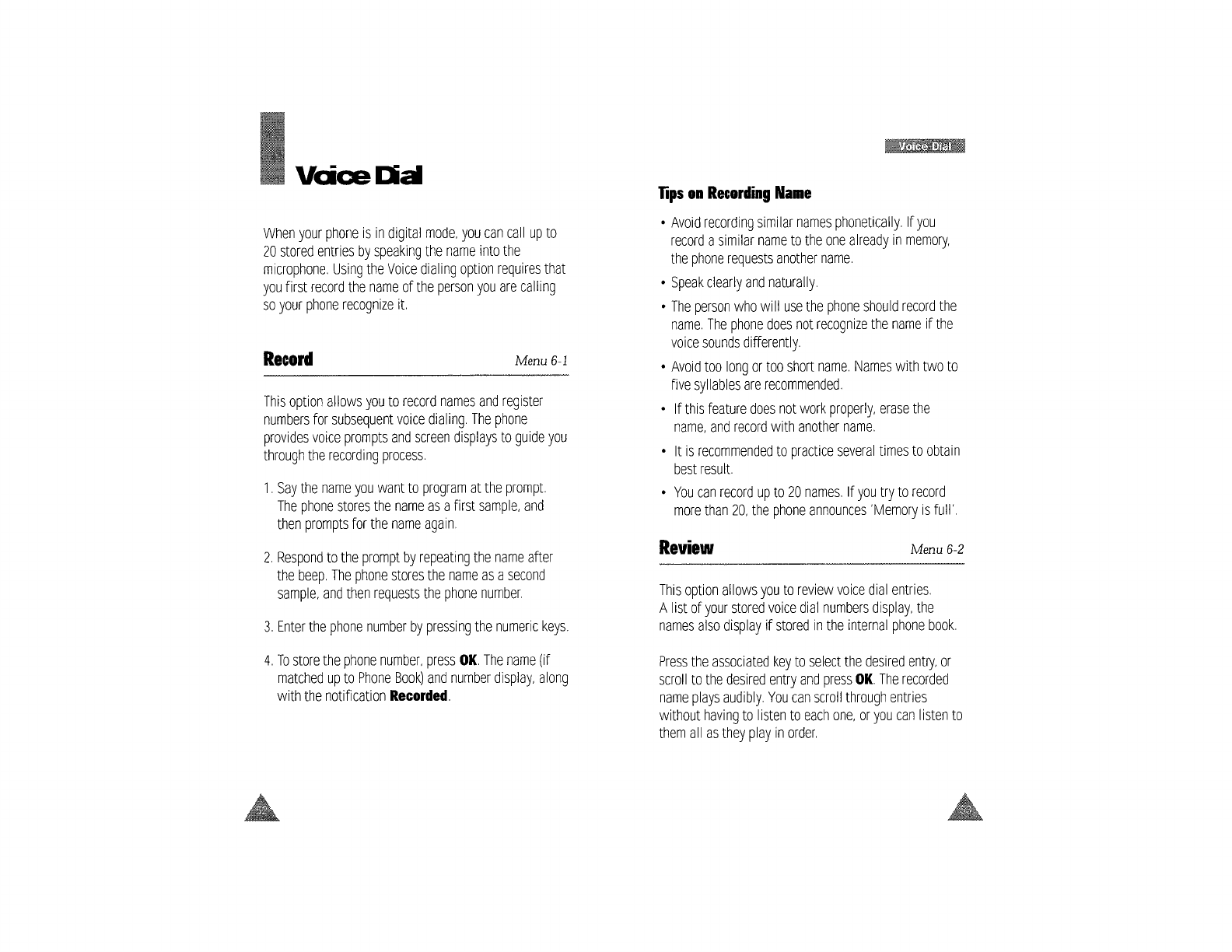
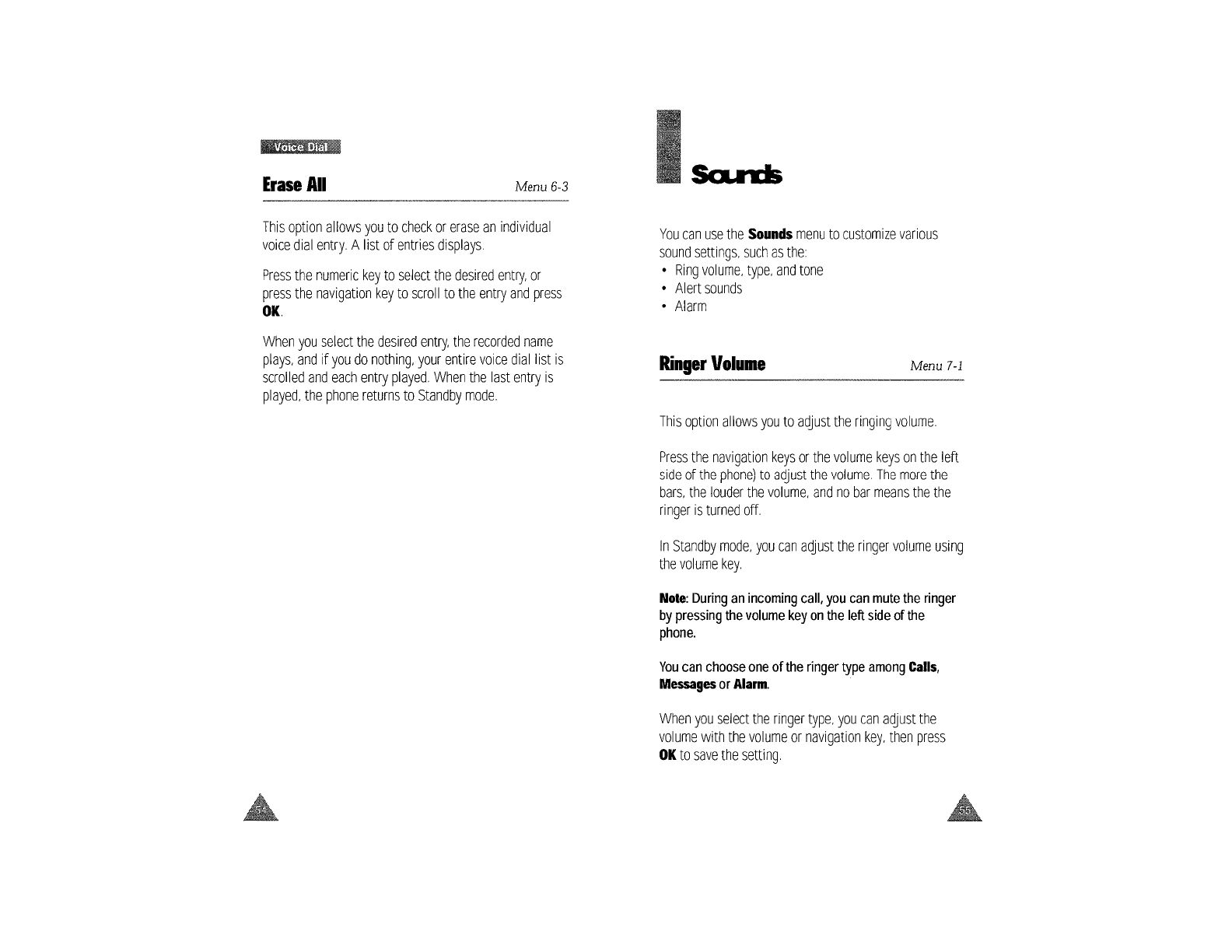
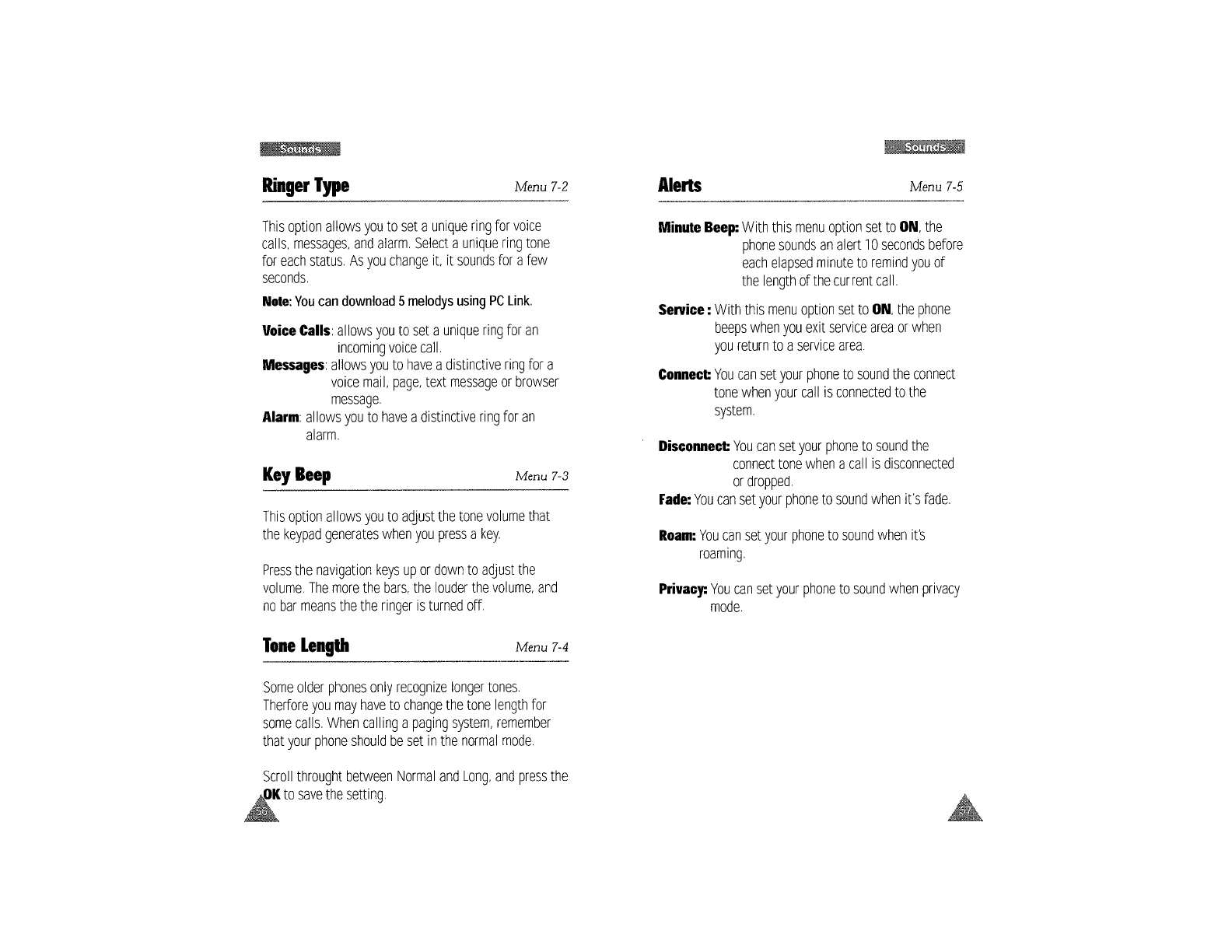
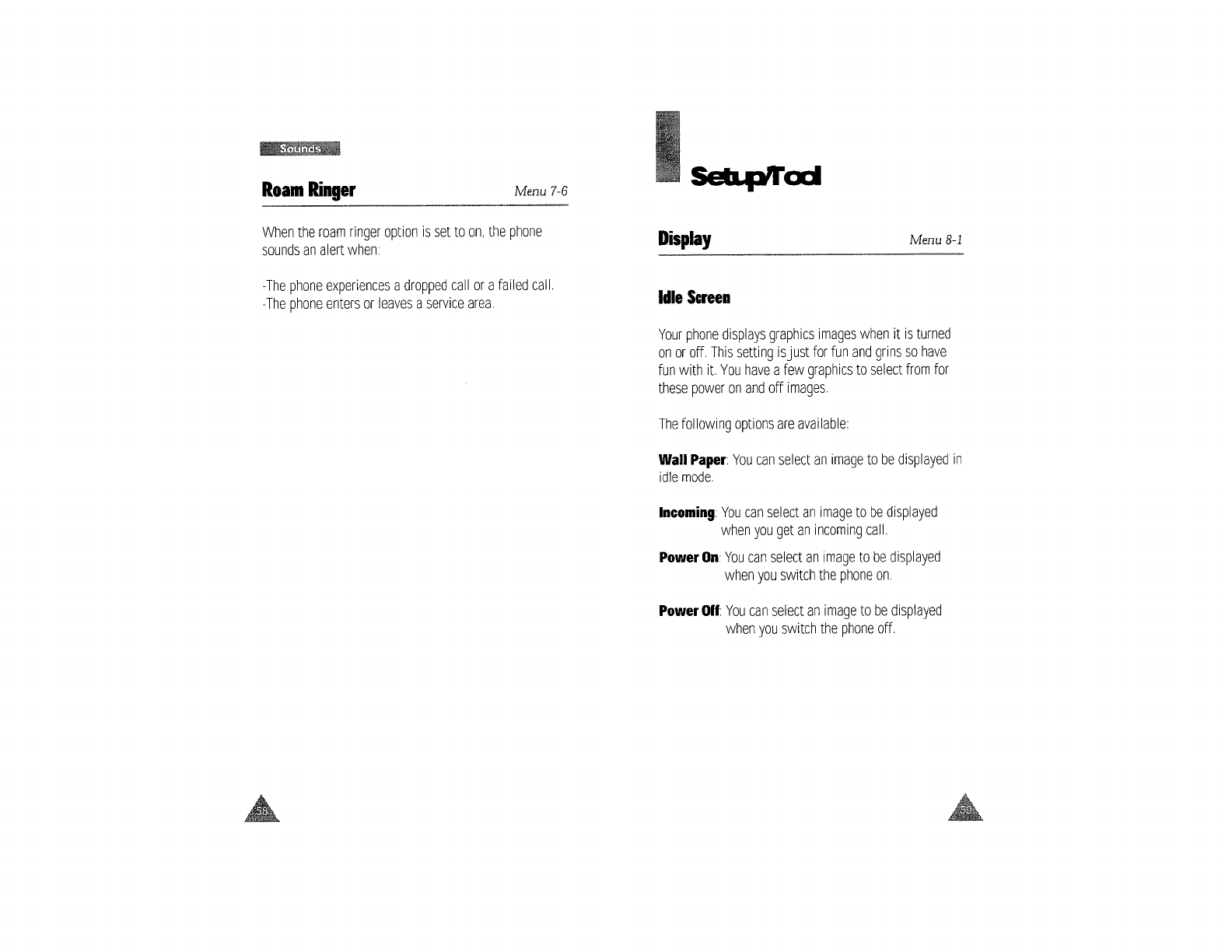
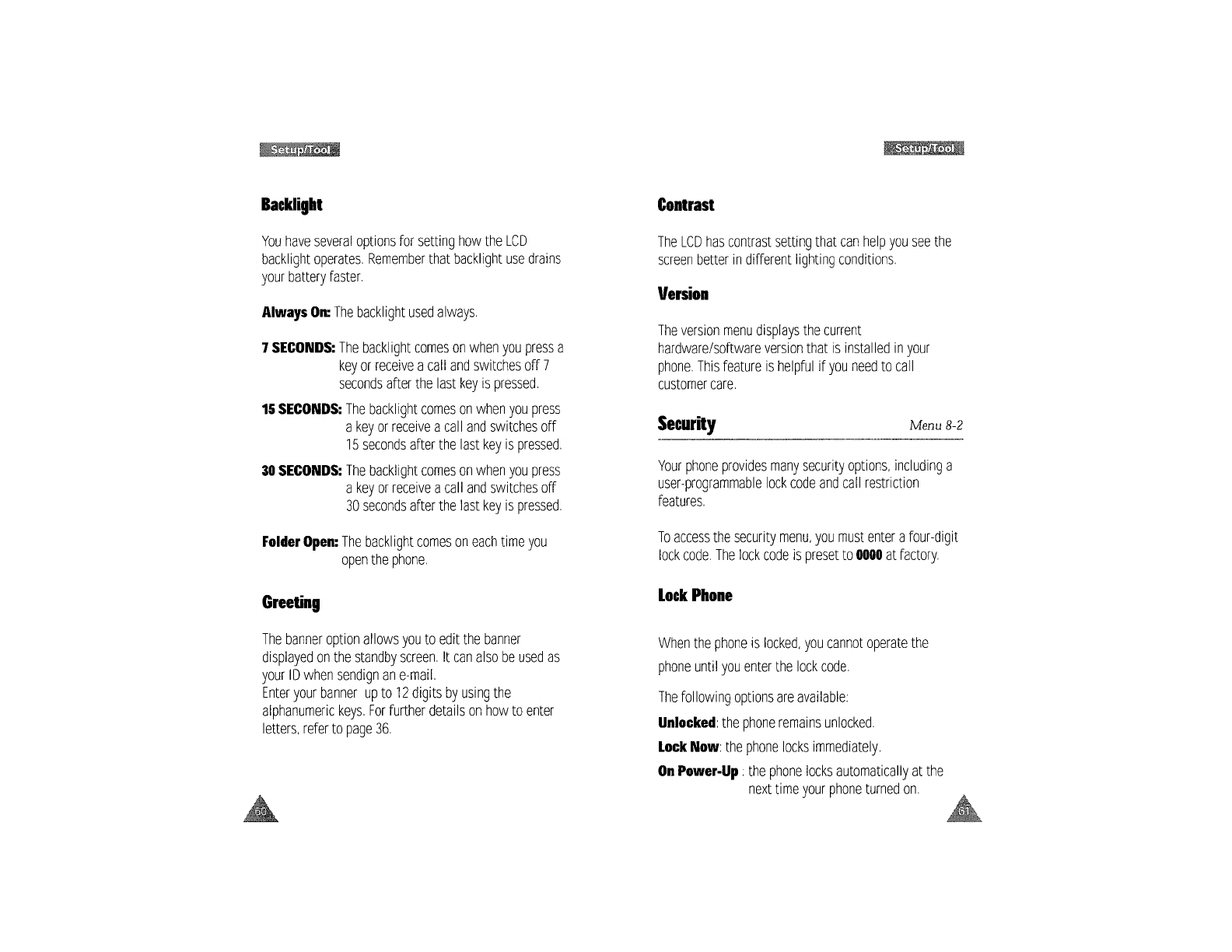
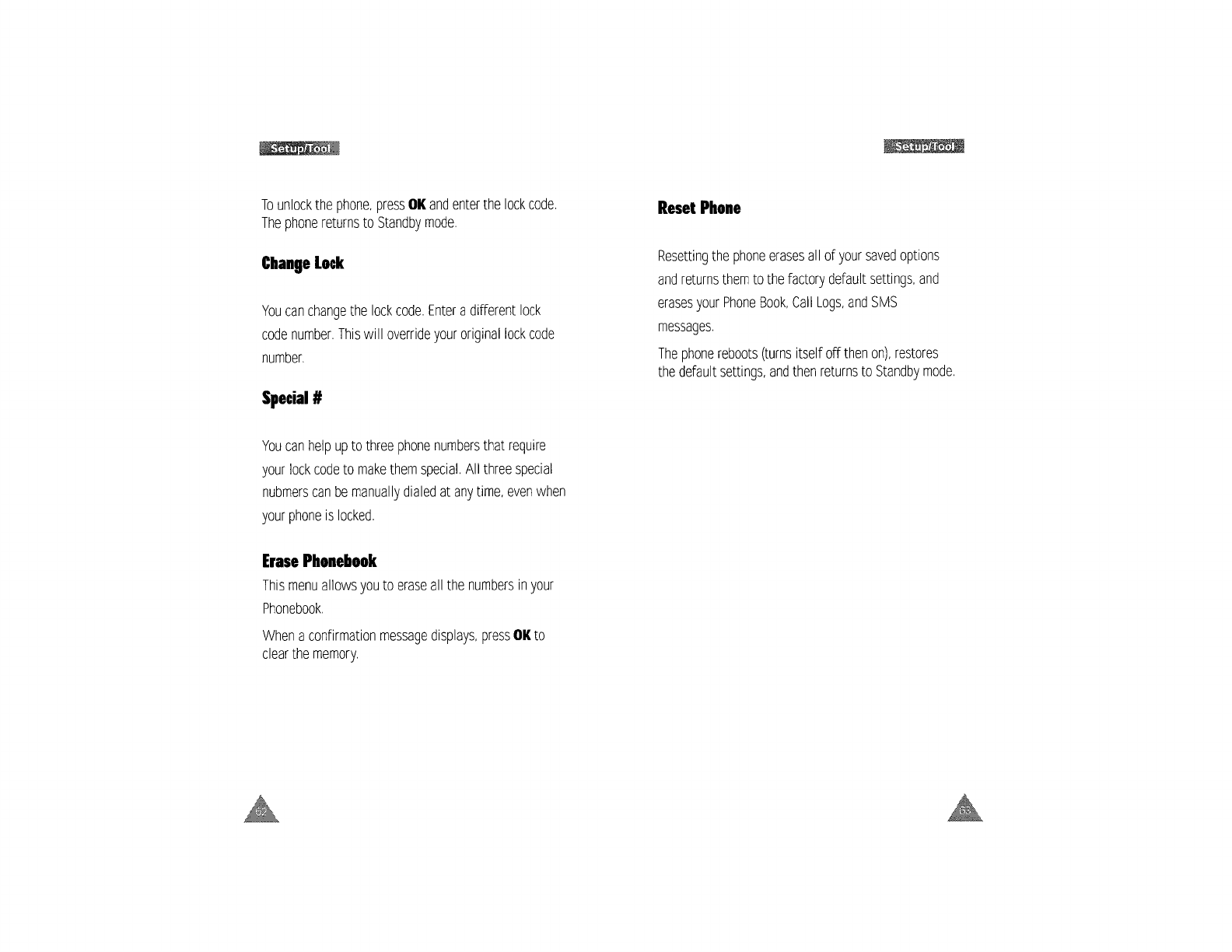
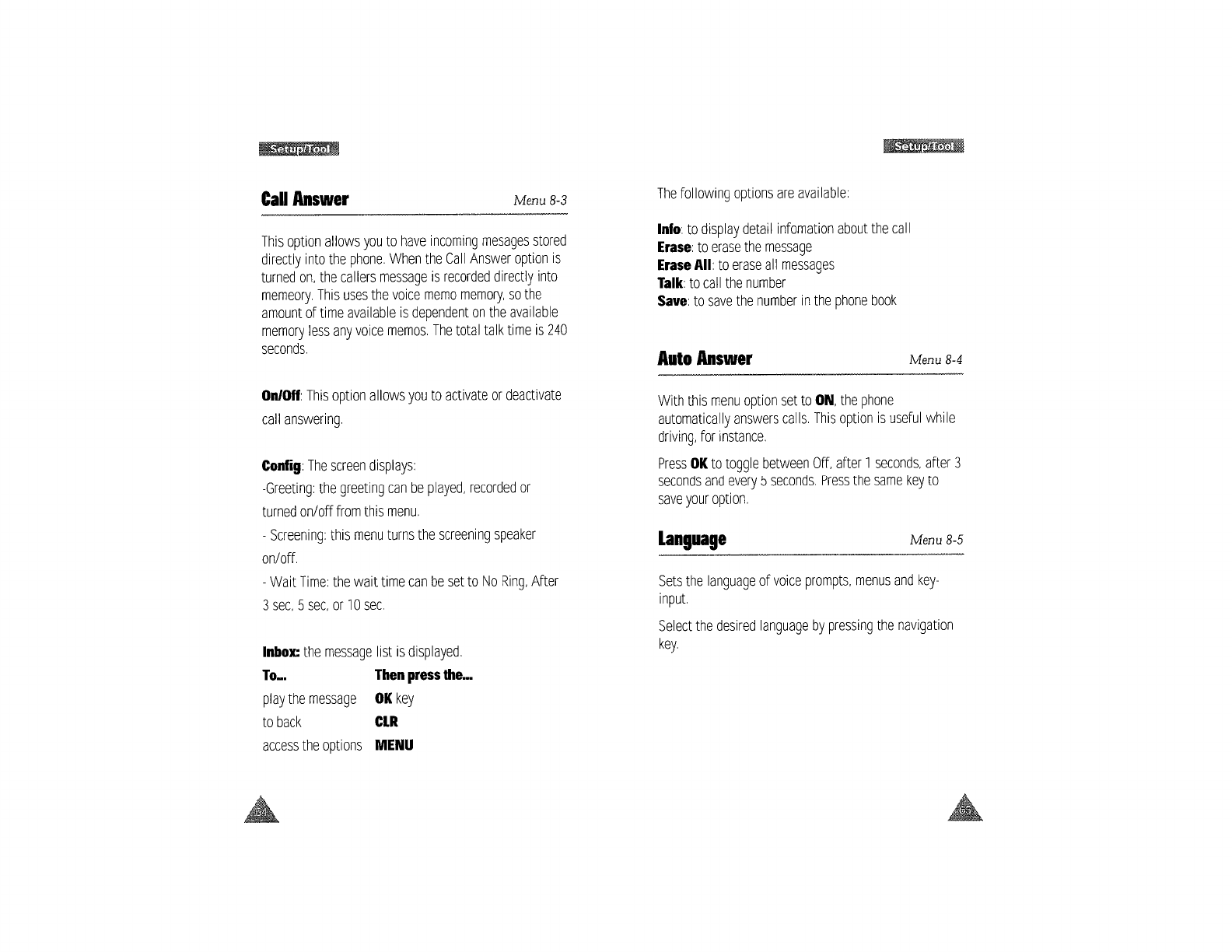
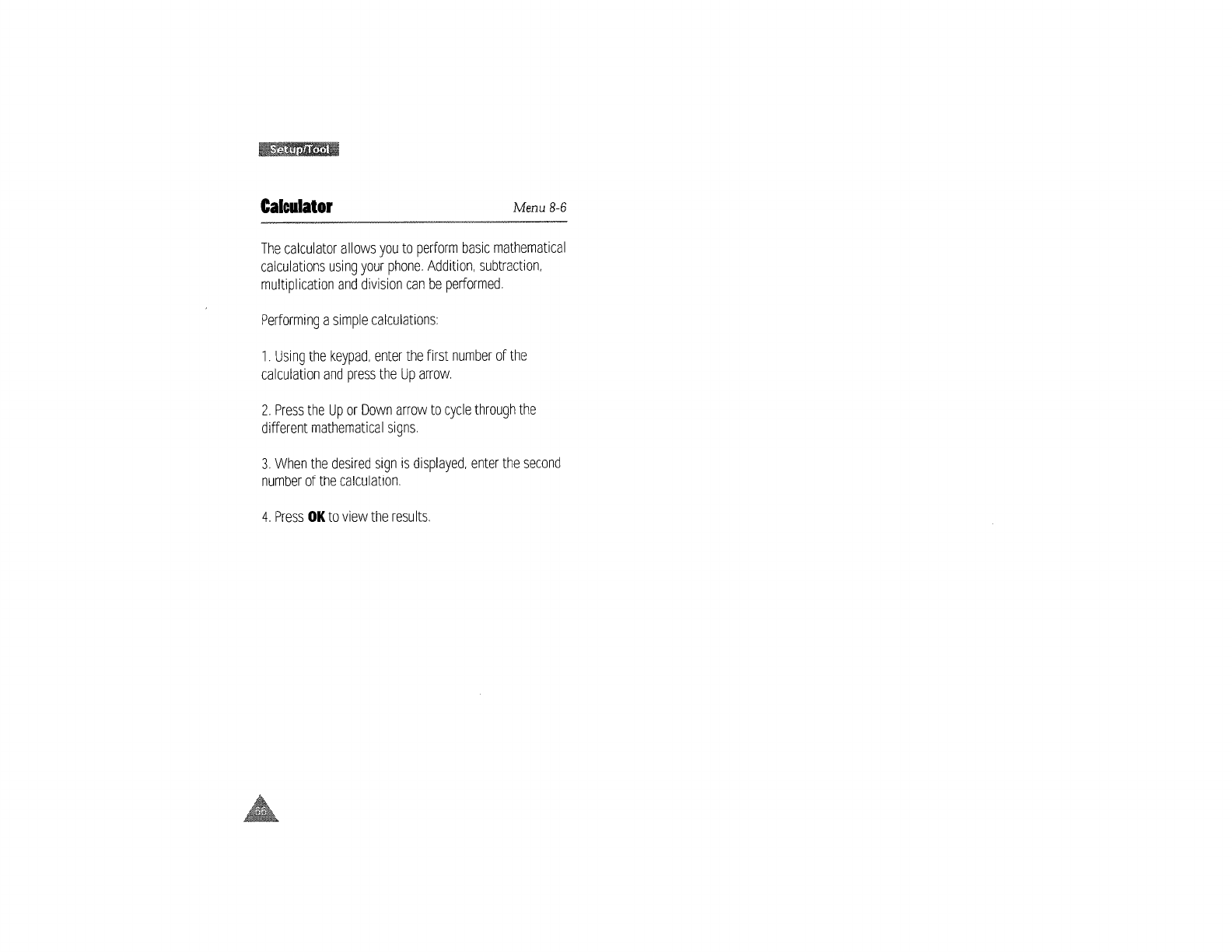

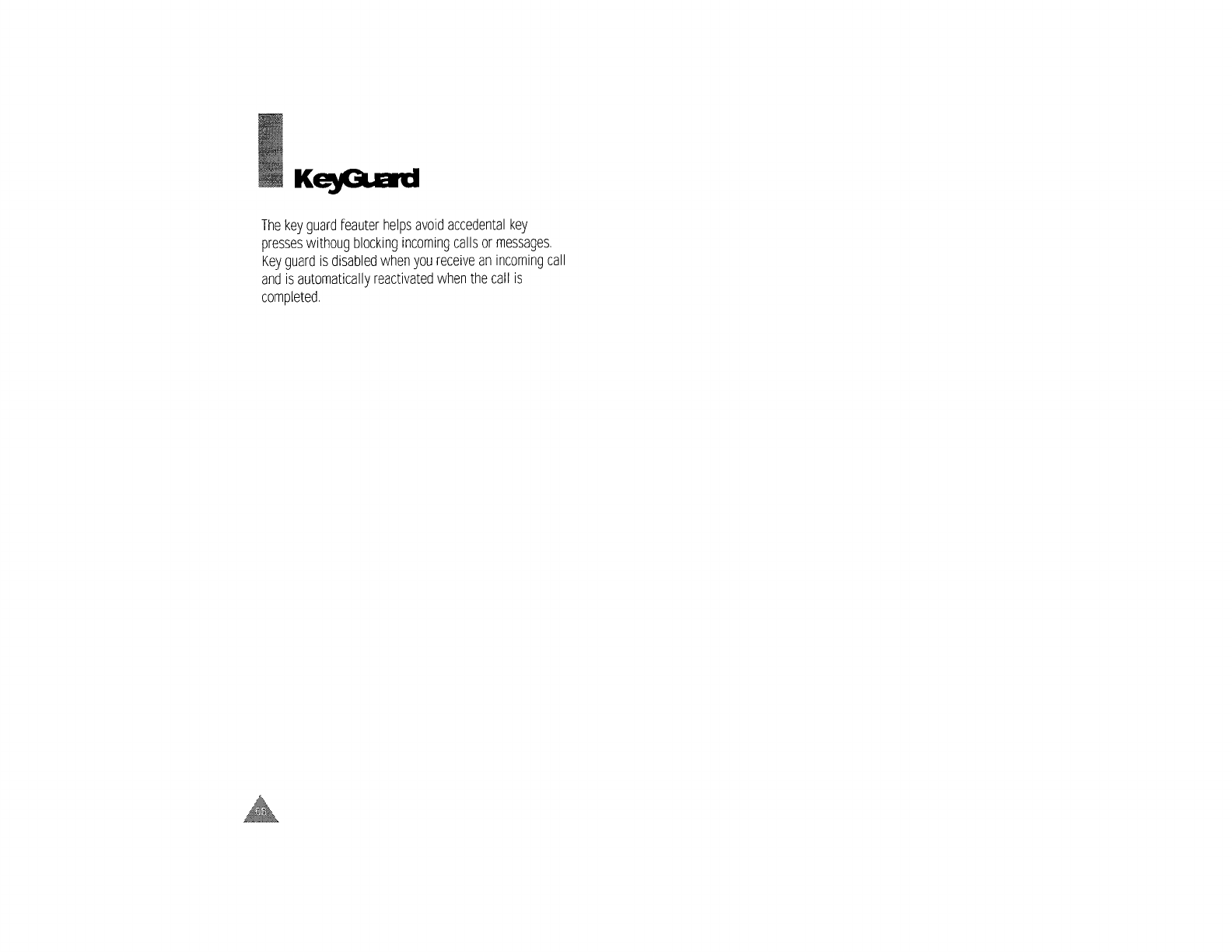
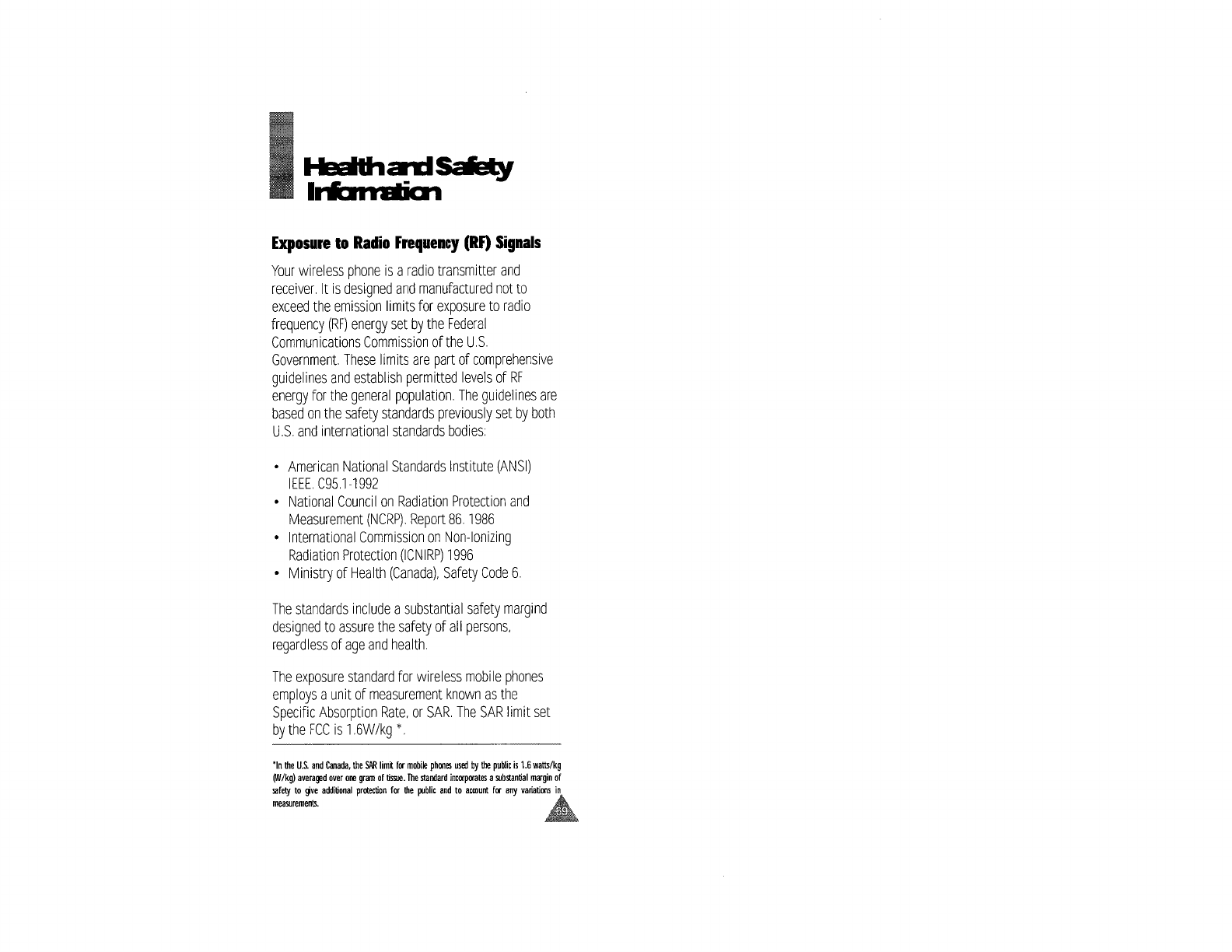
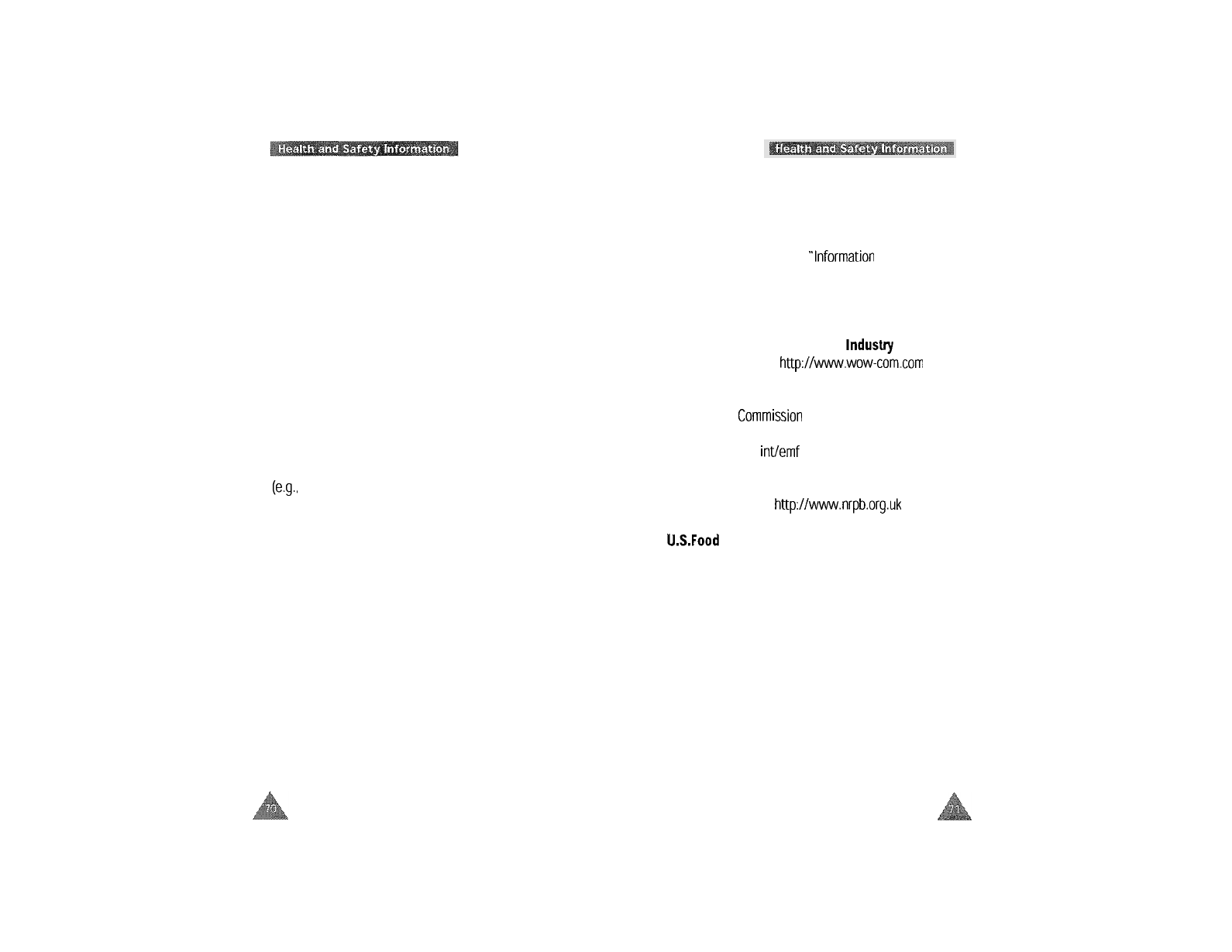
Tests for SAR are conducted using standard operating
positions specified by the
FCC
with the phone
transmitting at its highest certified power level in all
tested frequency bands. Although the SAR is
determined at the highest certified power level, the
actual SAR level of the phone while operation can be
well below the maximum value. This
is
because the
phone
is
designed to operate at multiple power levels
so
as
to
use only the power required to reach the
network. In general, the closer you are to a wireless
base station antenna, the lower the power output.
Before a phone model is available for sale
to
the
public,
it
must be tested and certified to the
FCC
that
it
does not exceed the limit established by the
government
-
adopted requirement for safe exposure.
The tests are performed in positions and locations
(e.g., at the ear and worn on the body) as required by
the
FCC
for each model. (Body
-
worn measurements
may differ among phone models, depending upon
available accessories and
FCC
requirements). While
there may be differences between the SAR levels of
various phones and at various positions, they all meet
the government requirement for safe exposure
For additional information concerning exposure
to
radio frequency signals, see the following websites.
Federal Communications Commission
(FCC)
RF
Safety program (select “Information
on
Human
Exposure to
RF
Fields from Cellular and PCS Radio
Transmitters”):
http://www,fcc.gov/oet/rfsafety
Cellular Telecommunications Industry
Association
(CTIA): http://www.wow-corn.com
World Health Organization
(WHO)
International Commission on Non
-
Ionizing Radiation
Protection (select
Qs
&
As):
http://www.who.
i
nt/emf
United Kingdom, National Radiological
Protection Board.
http,//ww.nrpb,org.uk
U.S.Food and Drug Administration
(FDA)
Center for Devices and Radiological Health:
http://www.fda.gov/cdrh/consumer/
